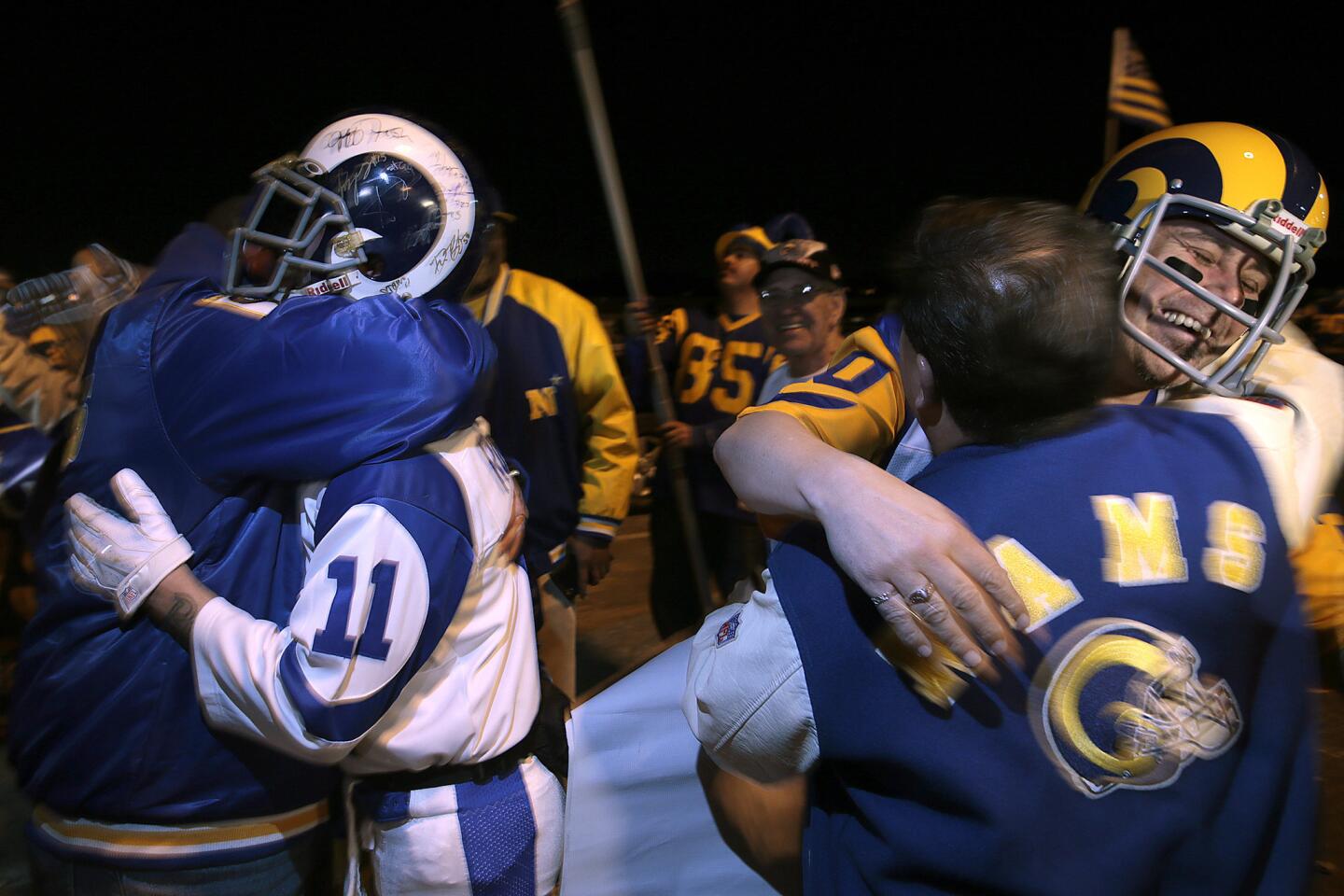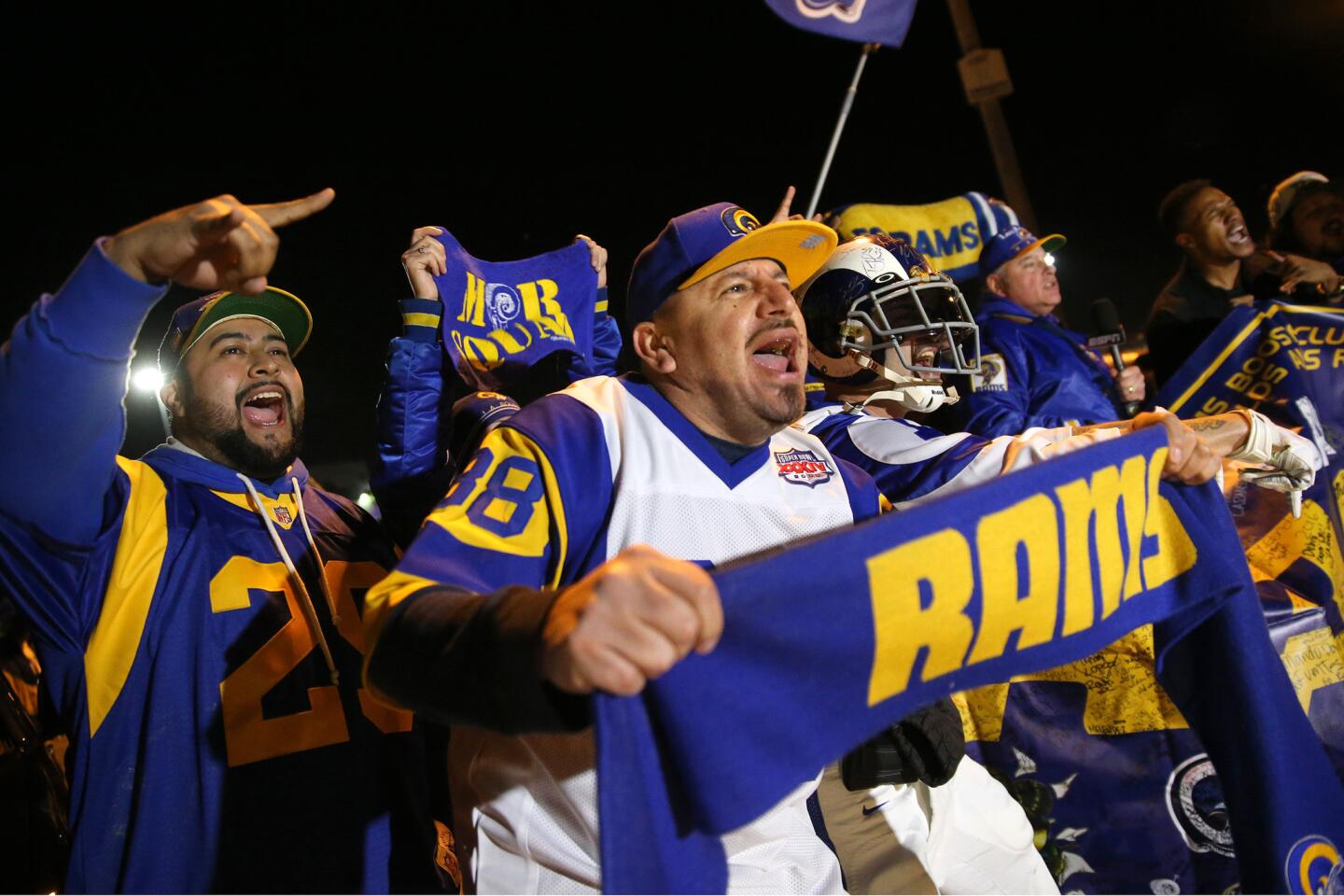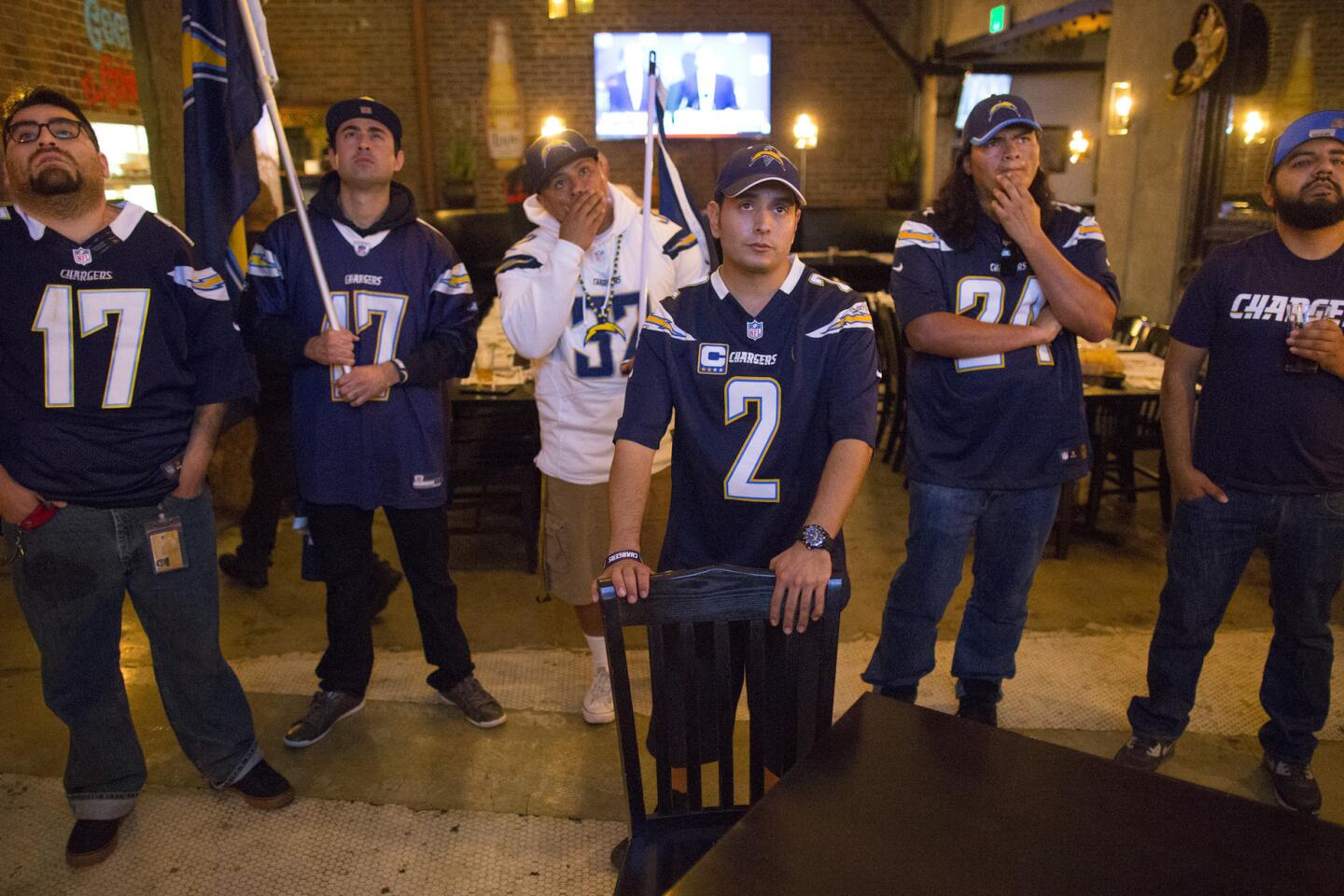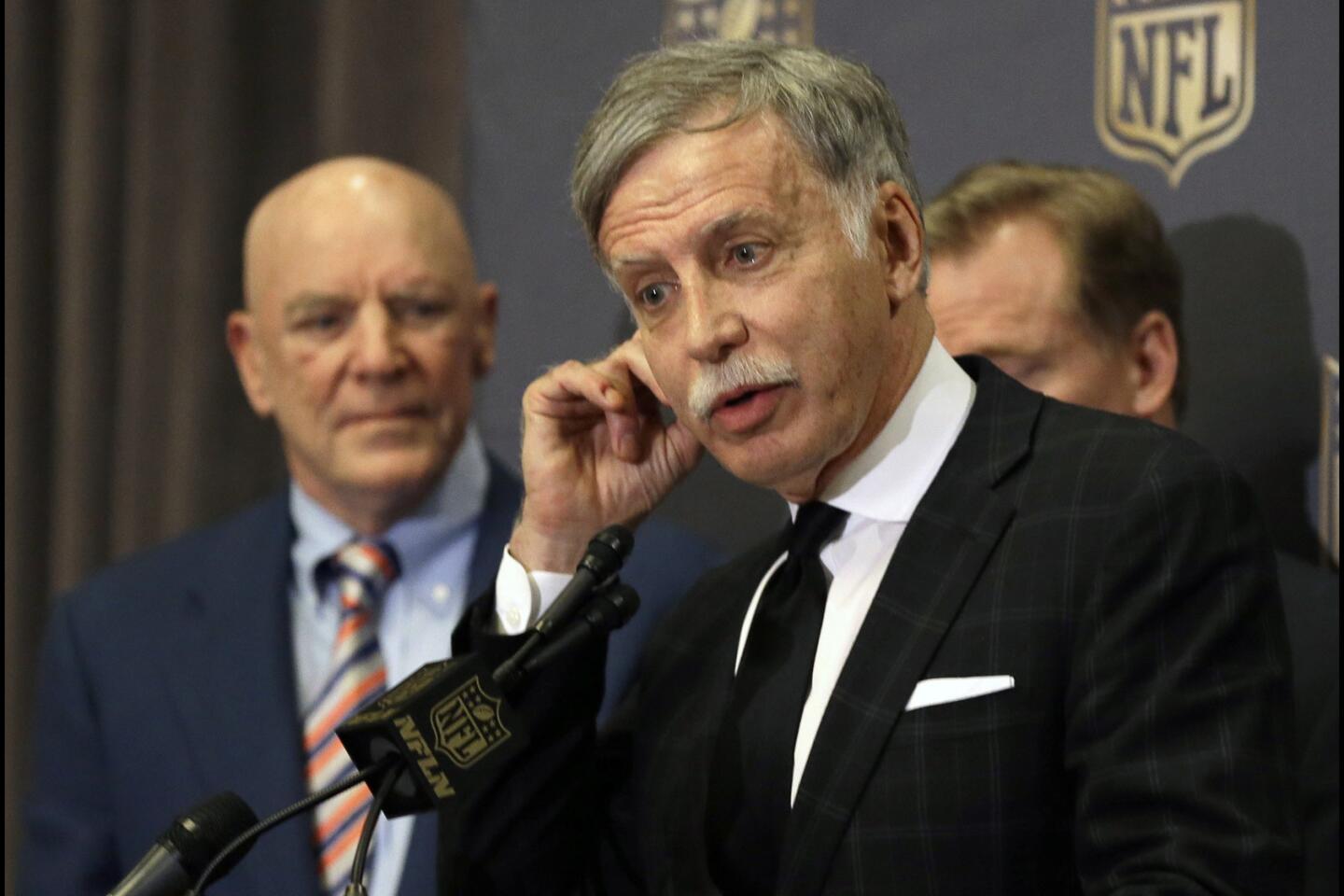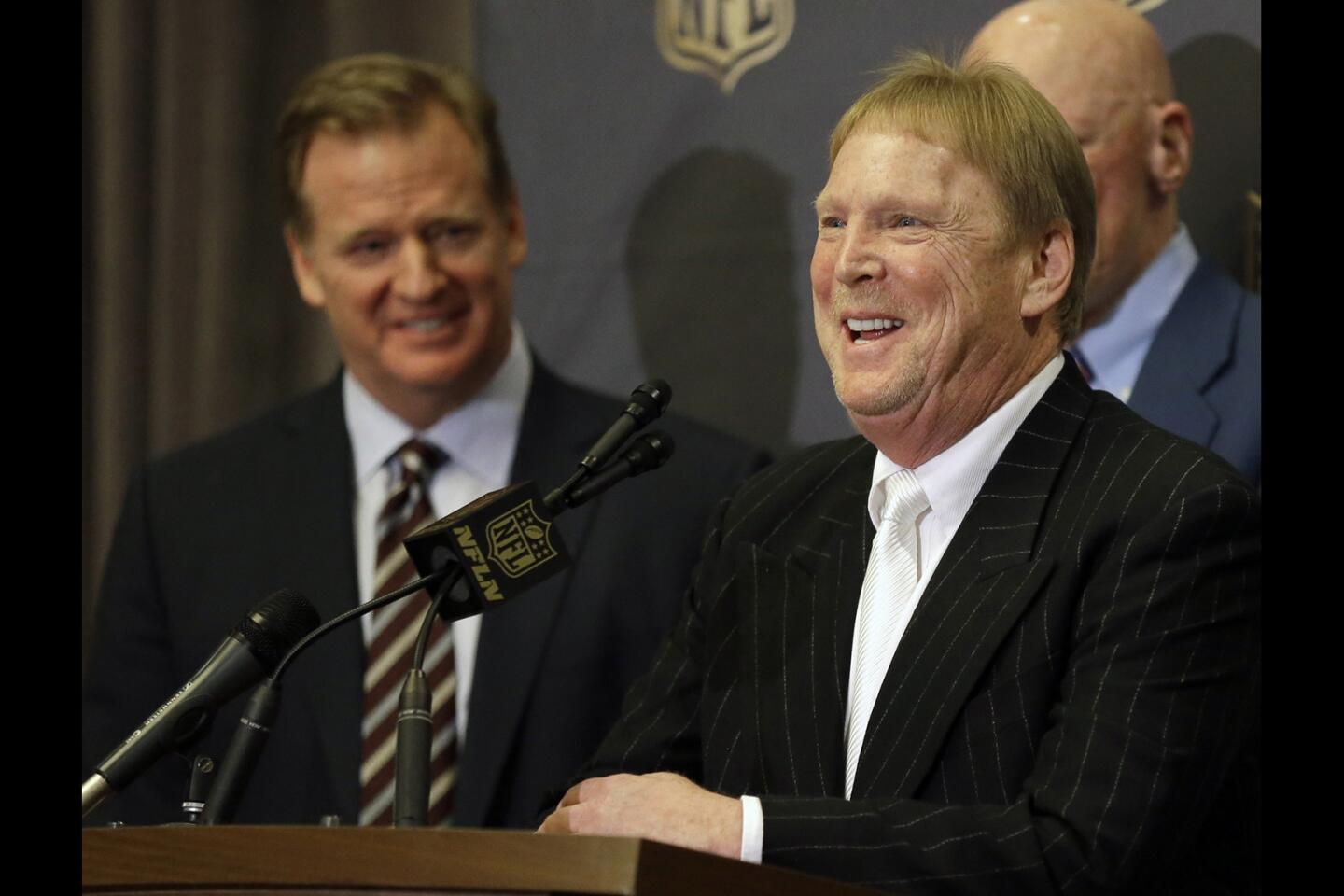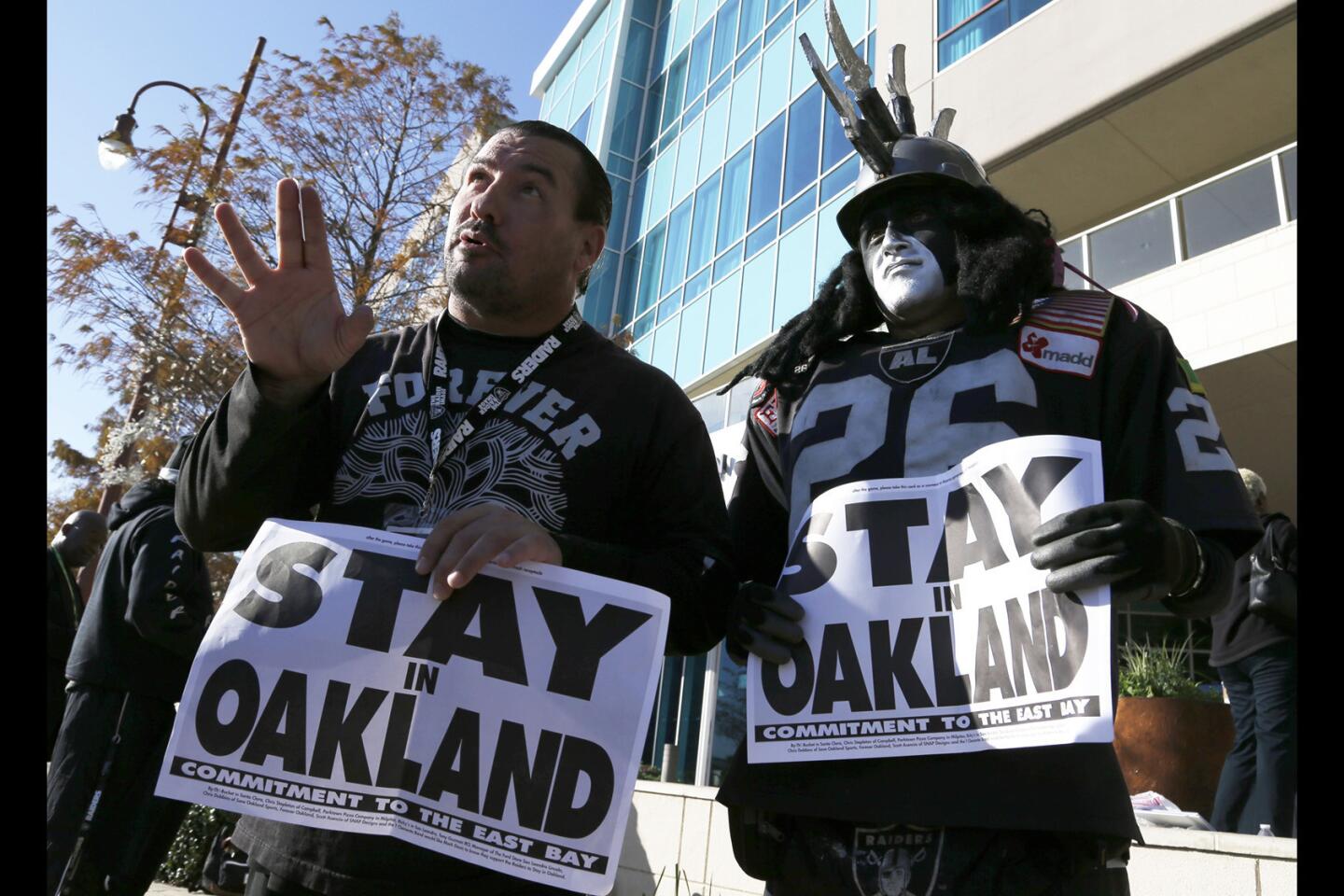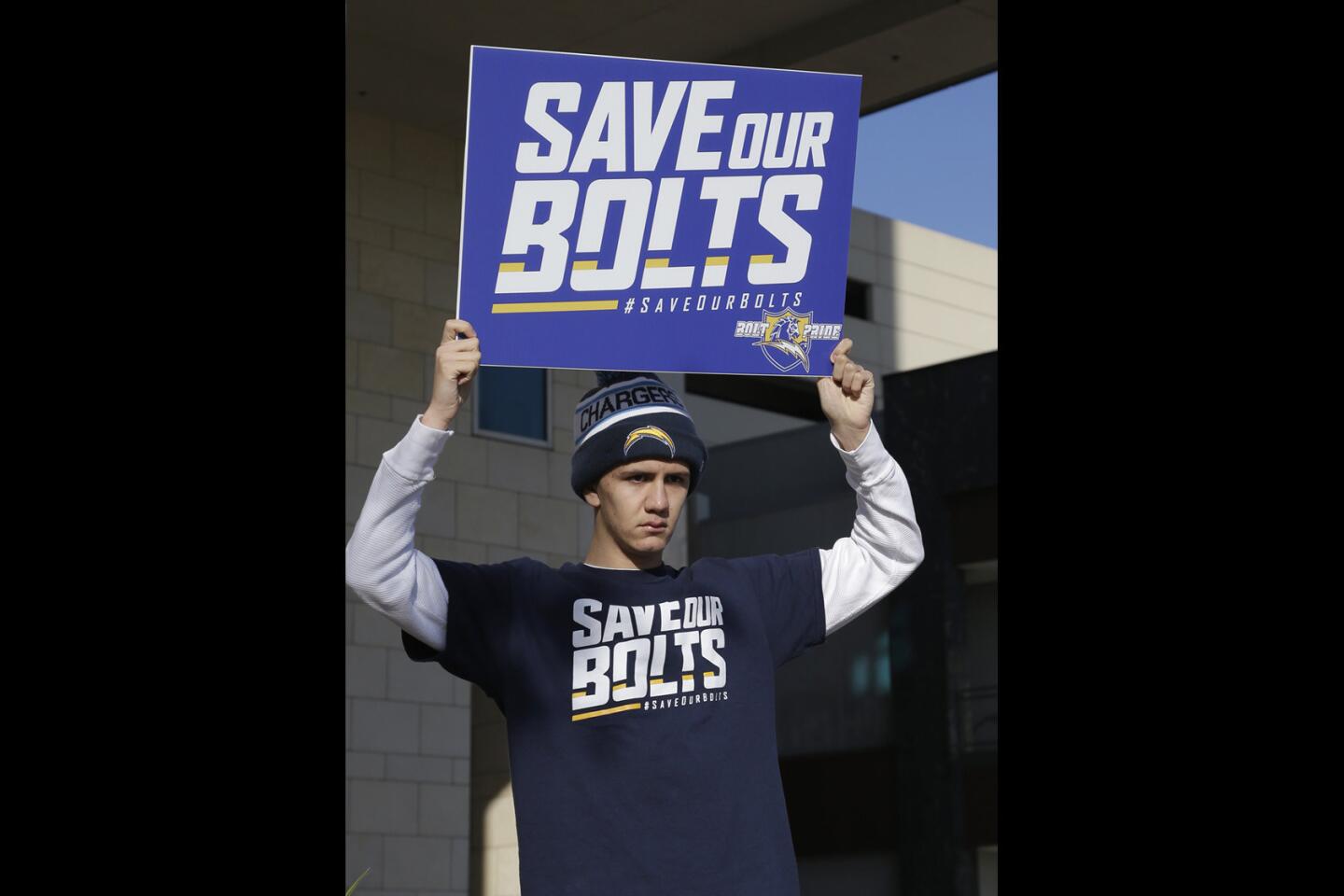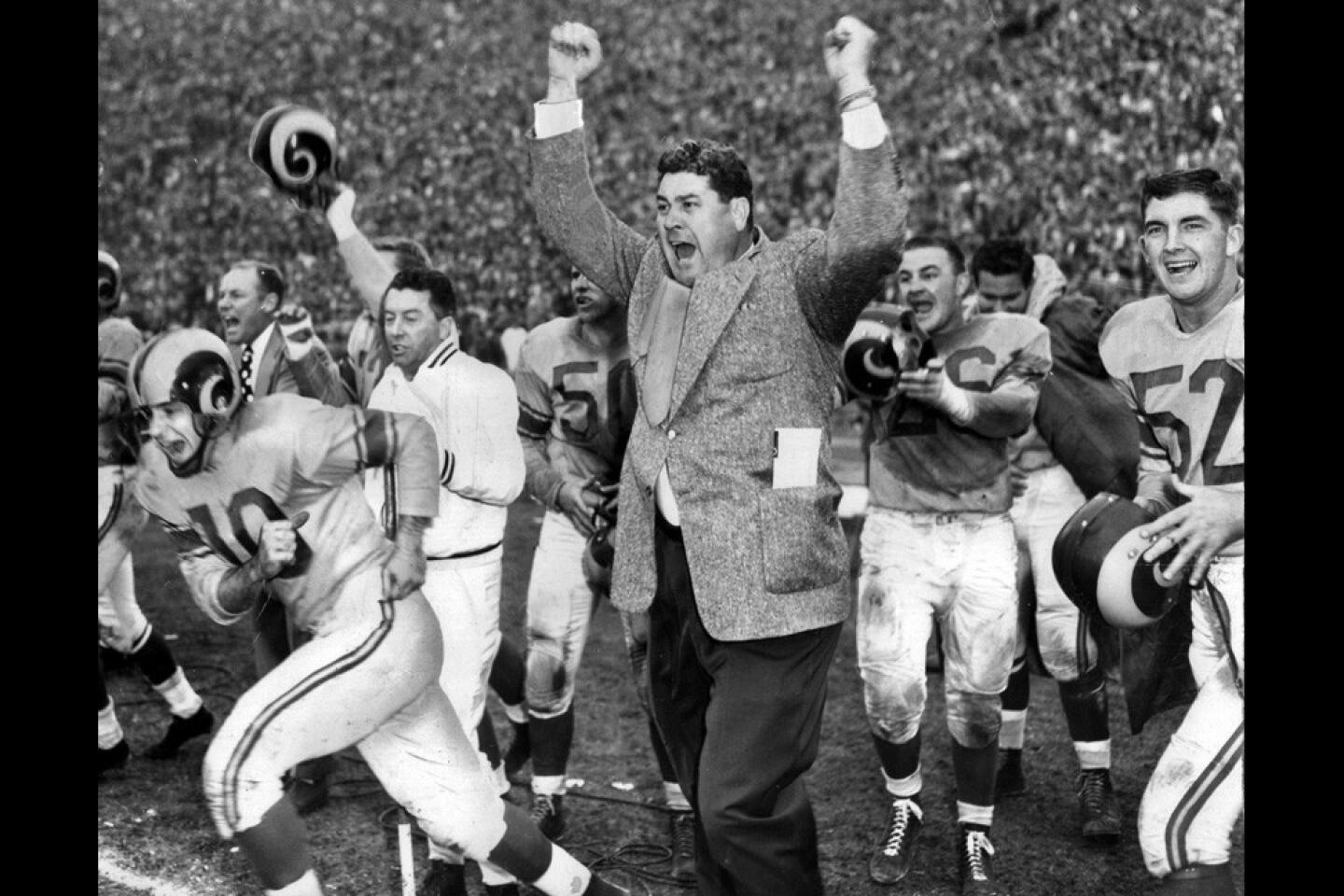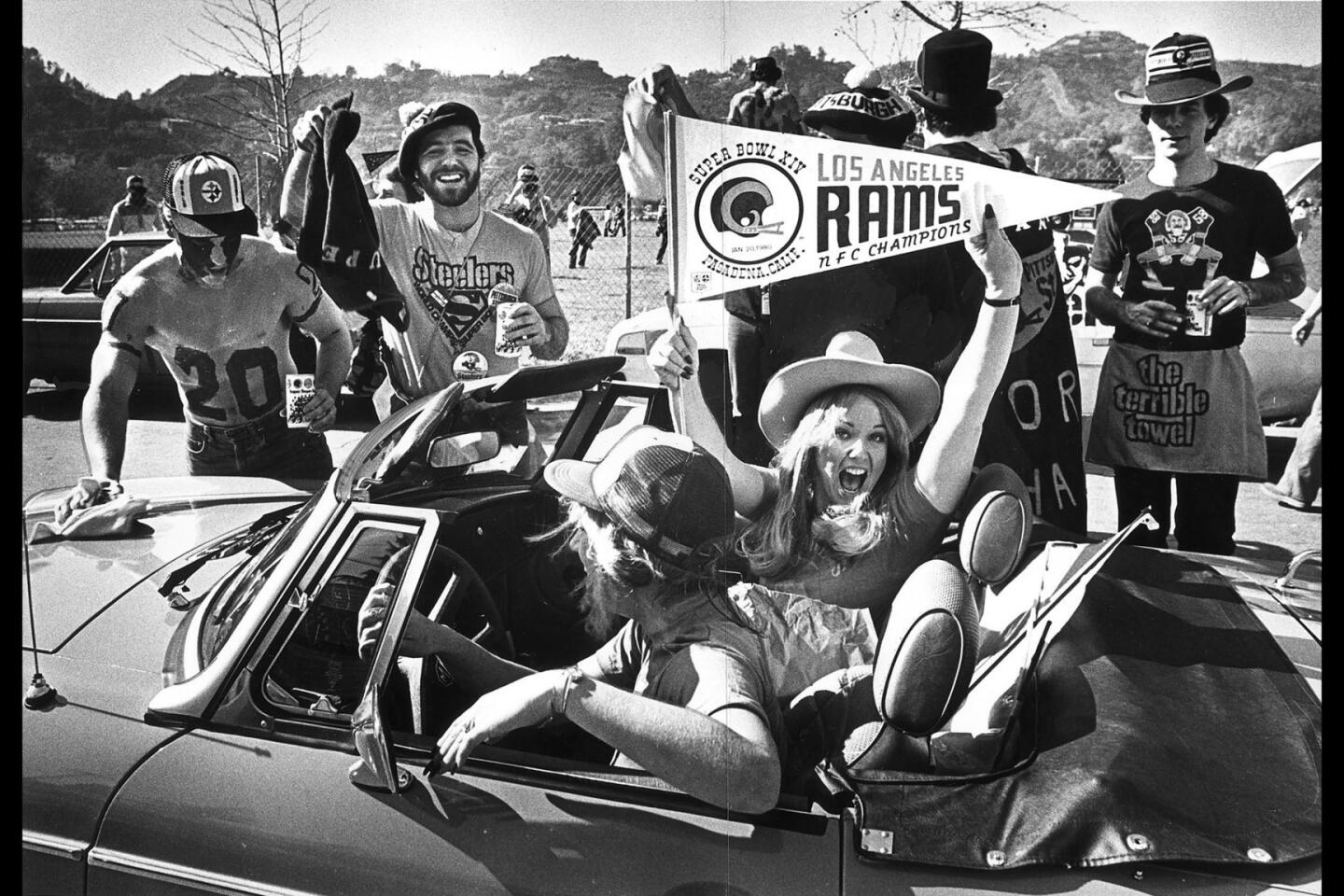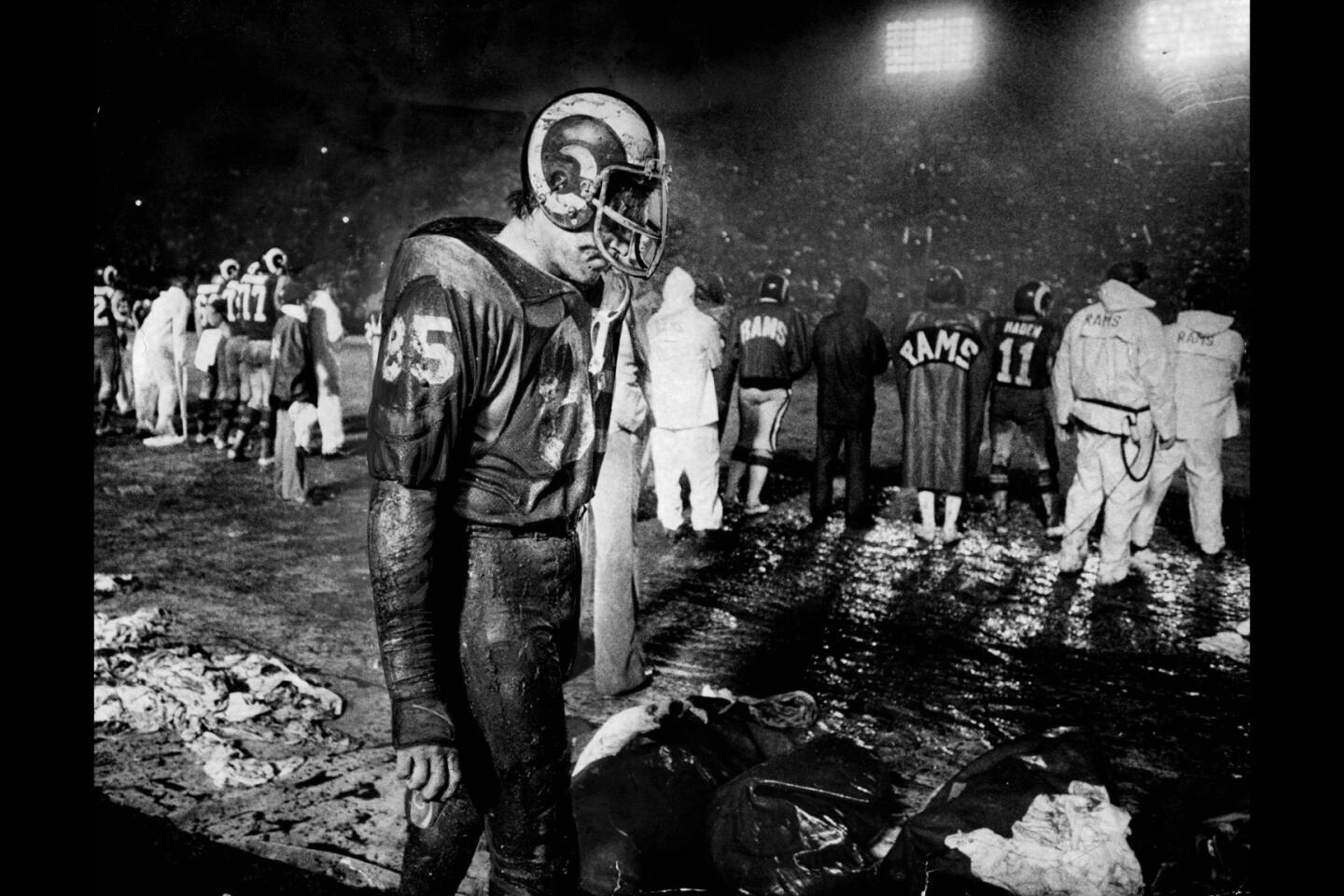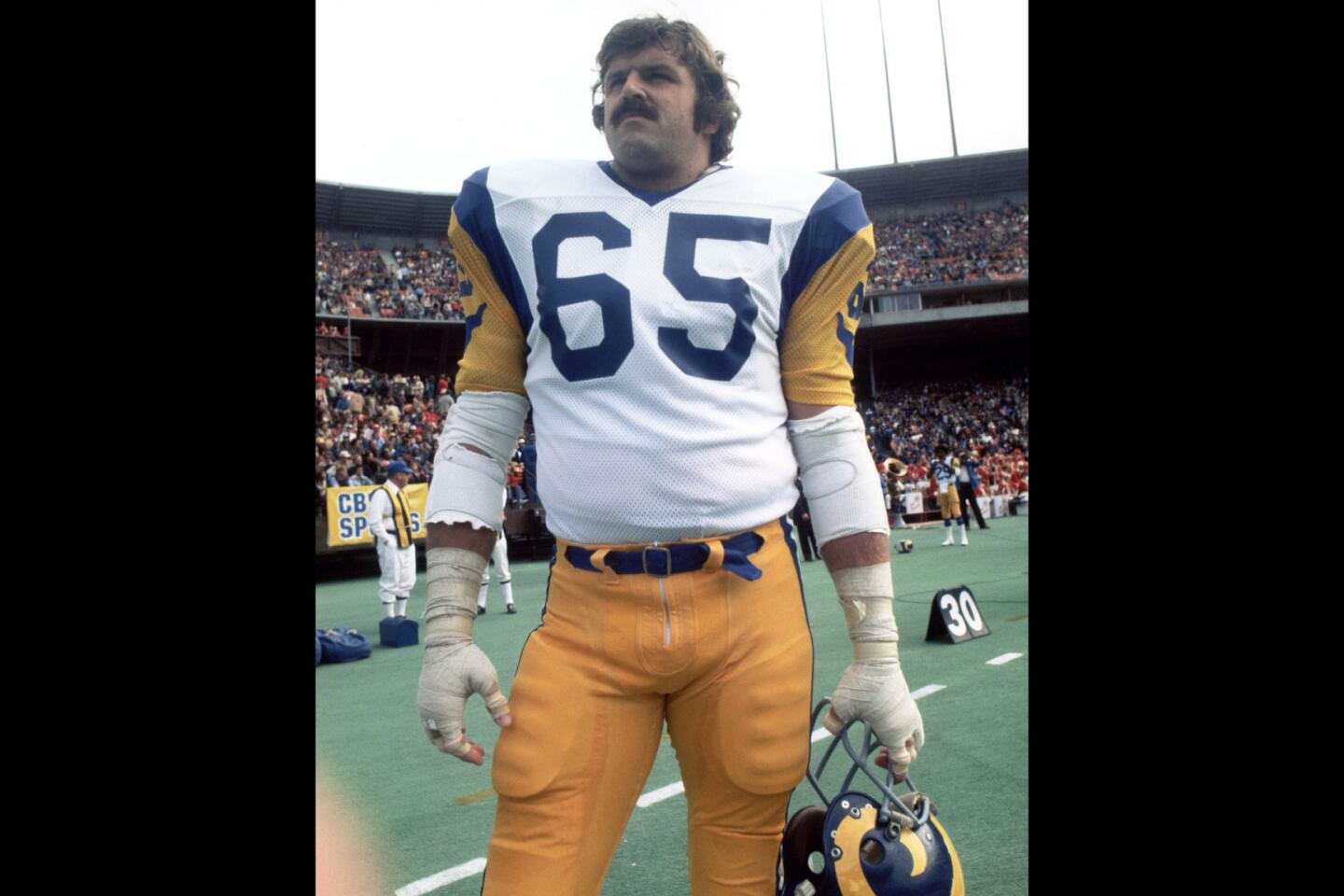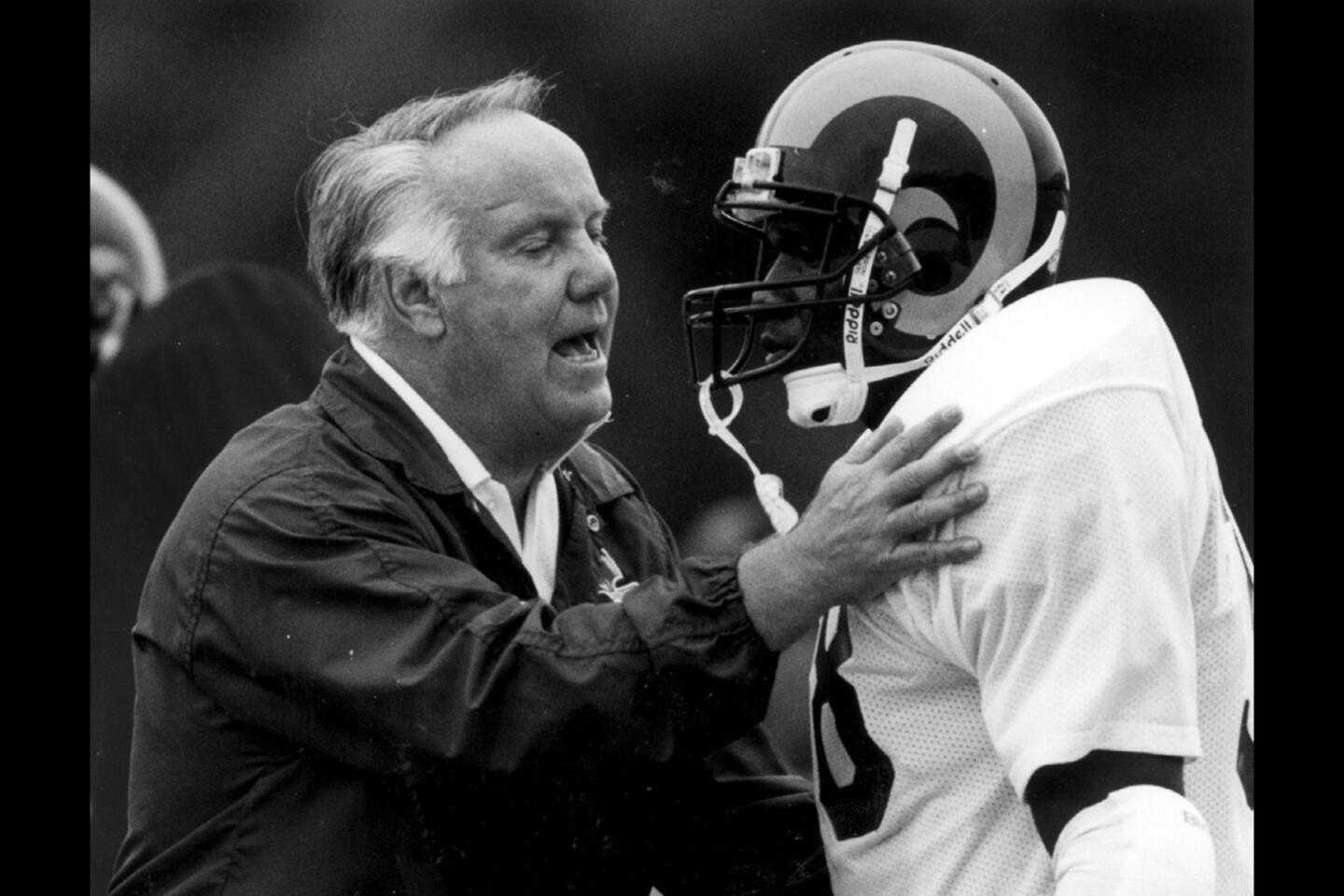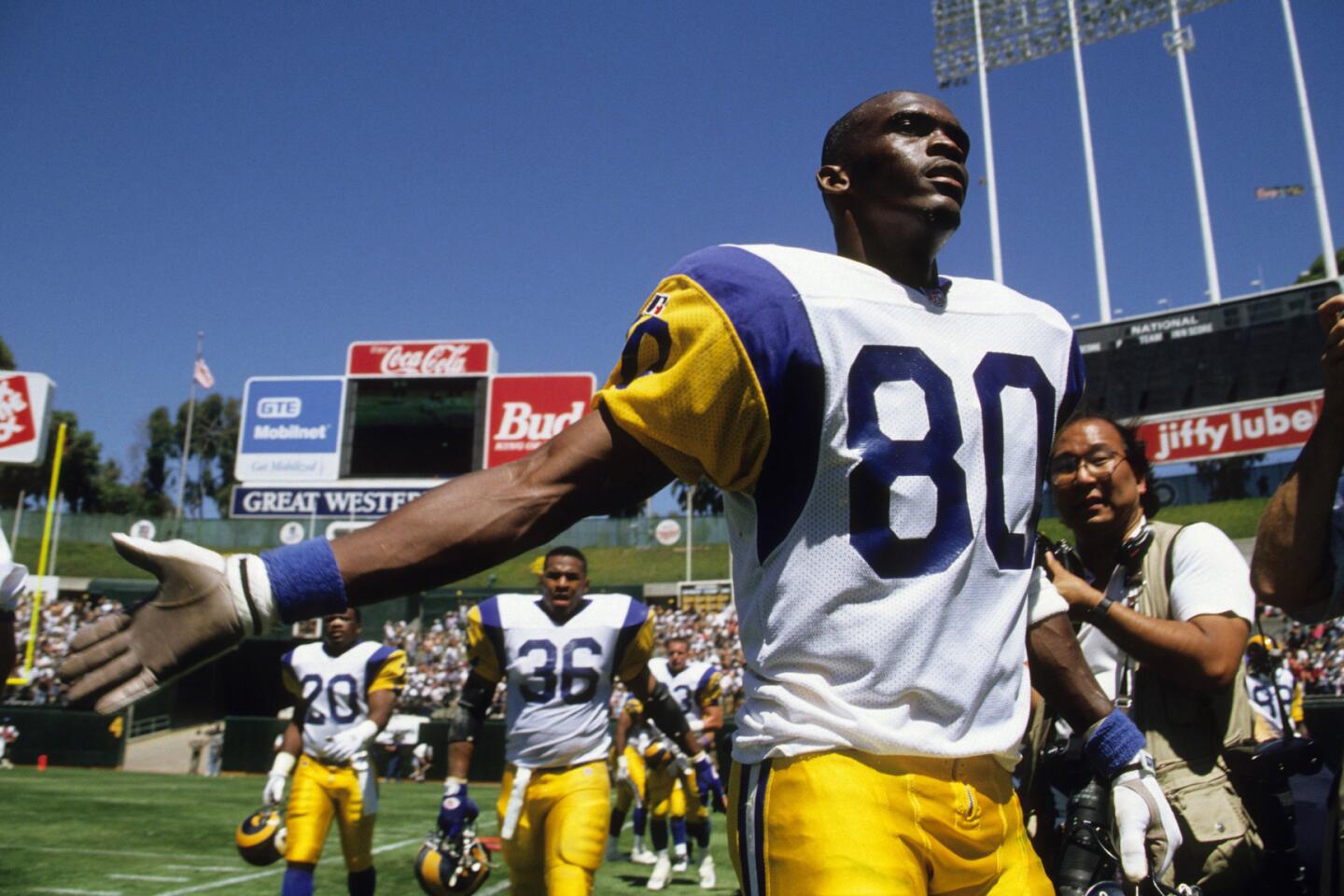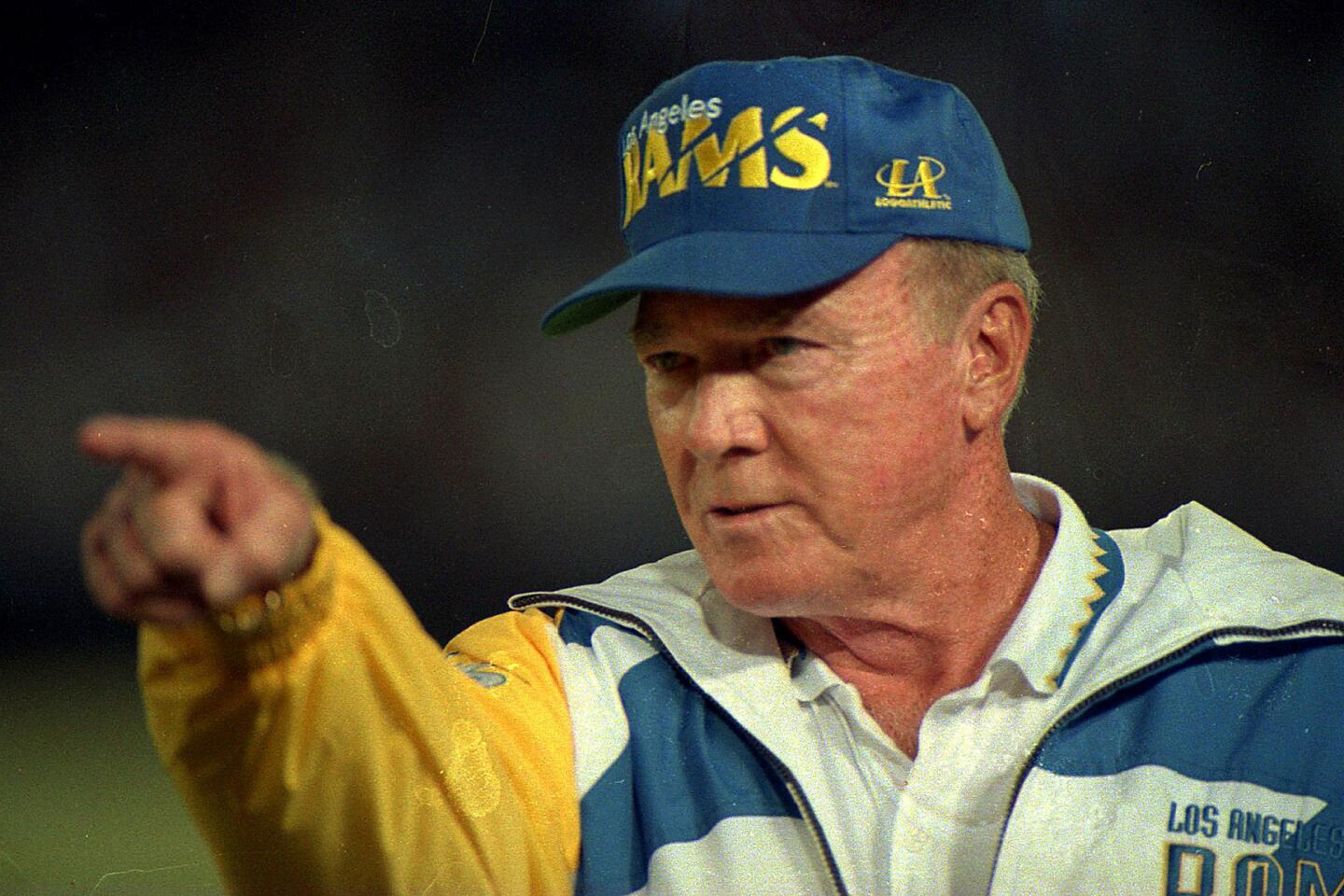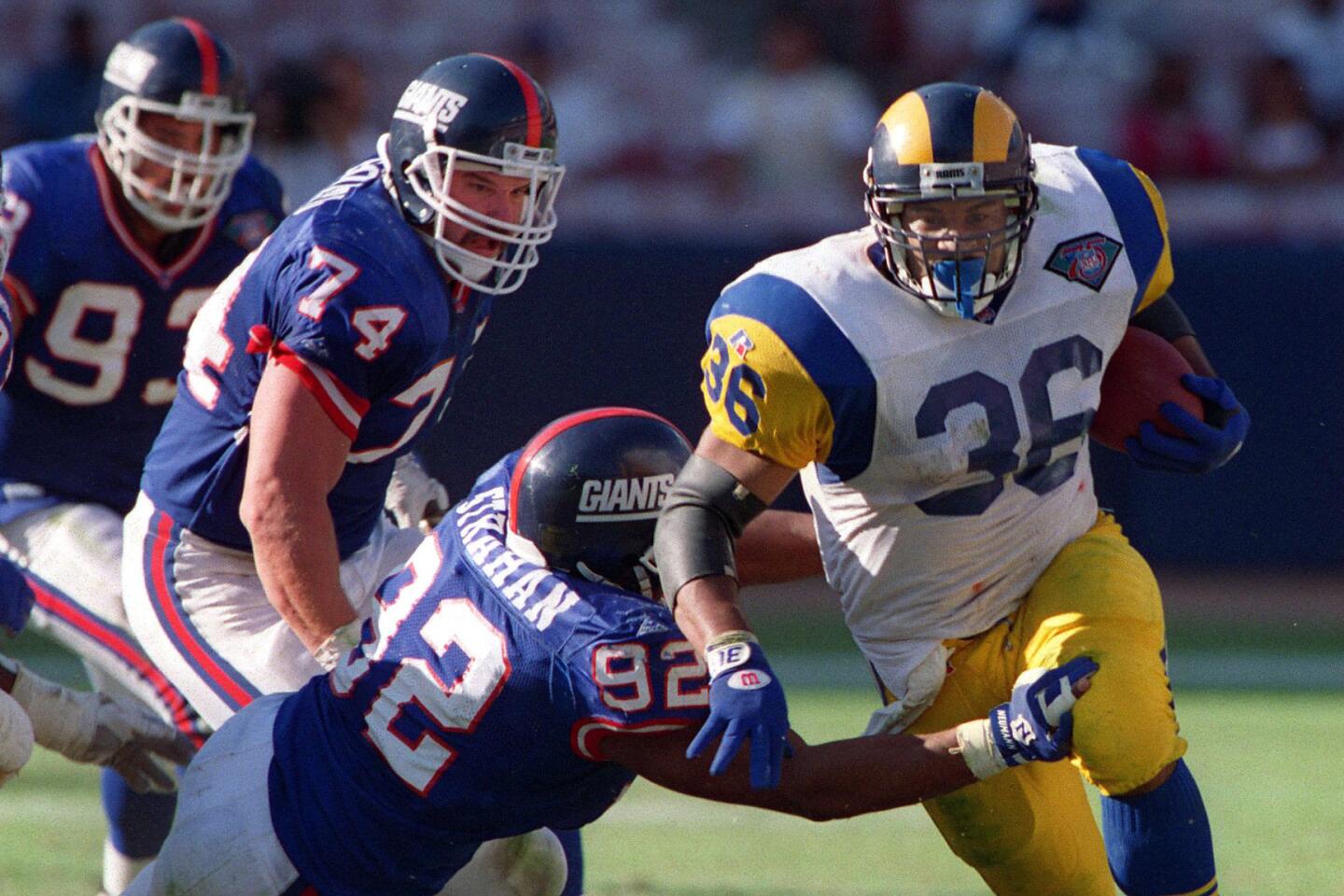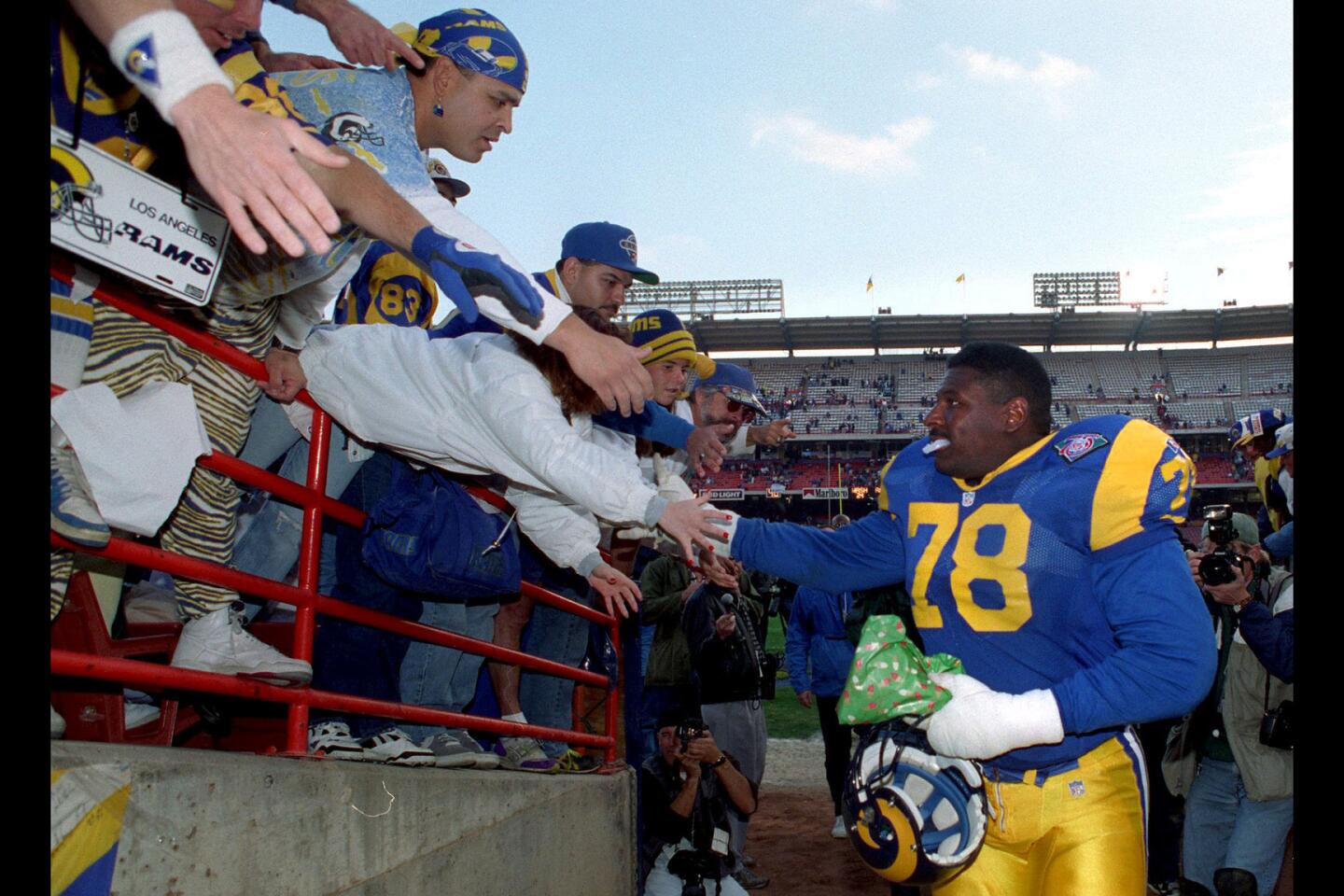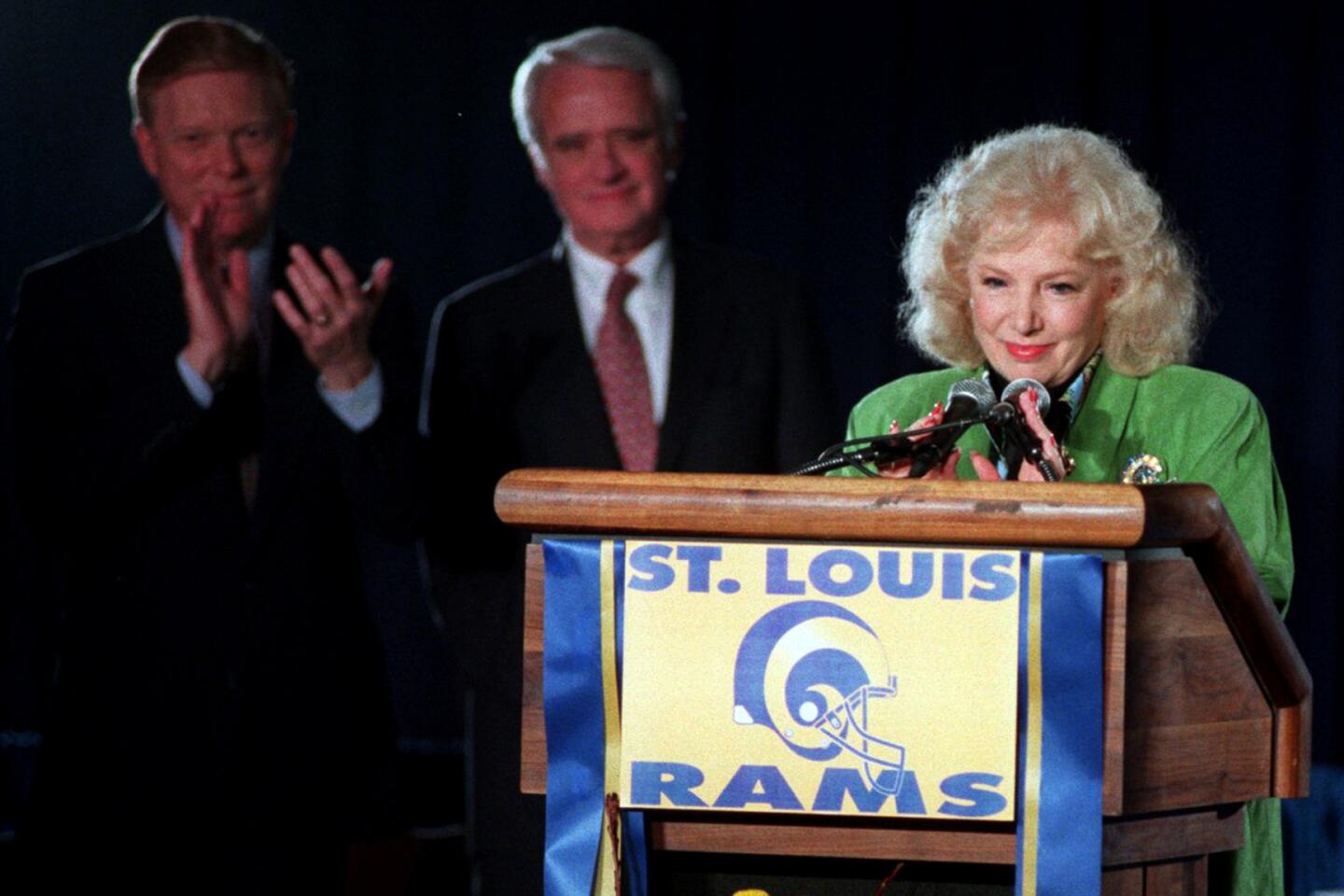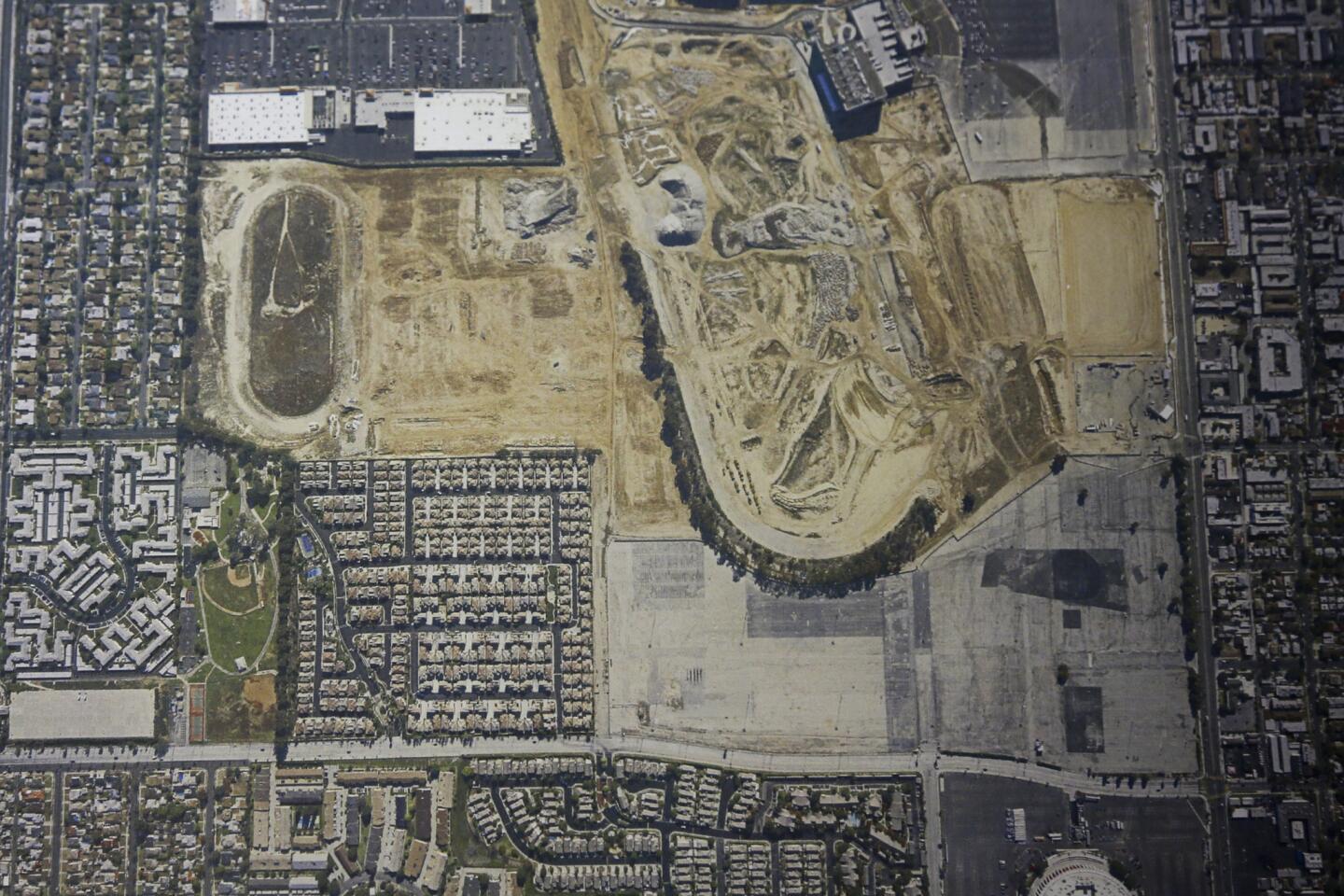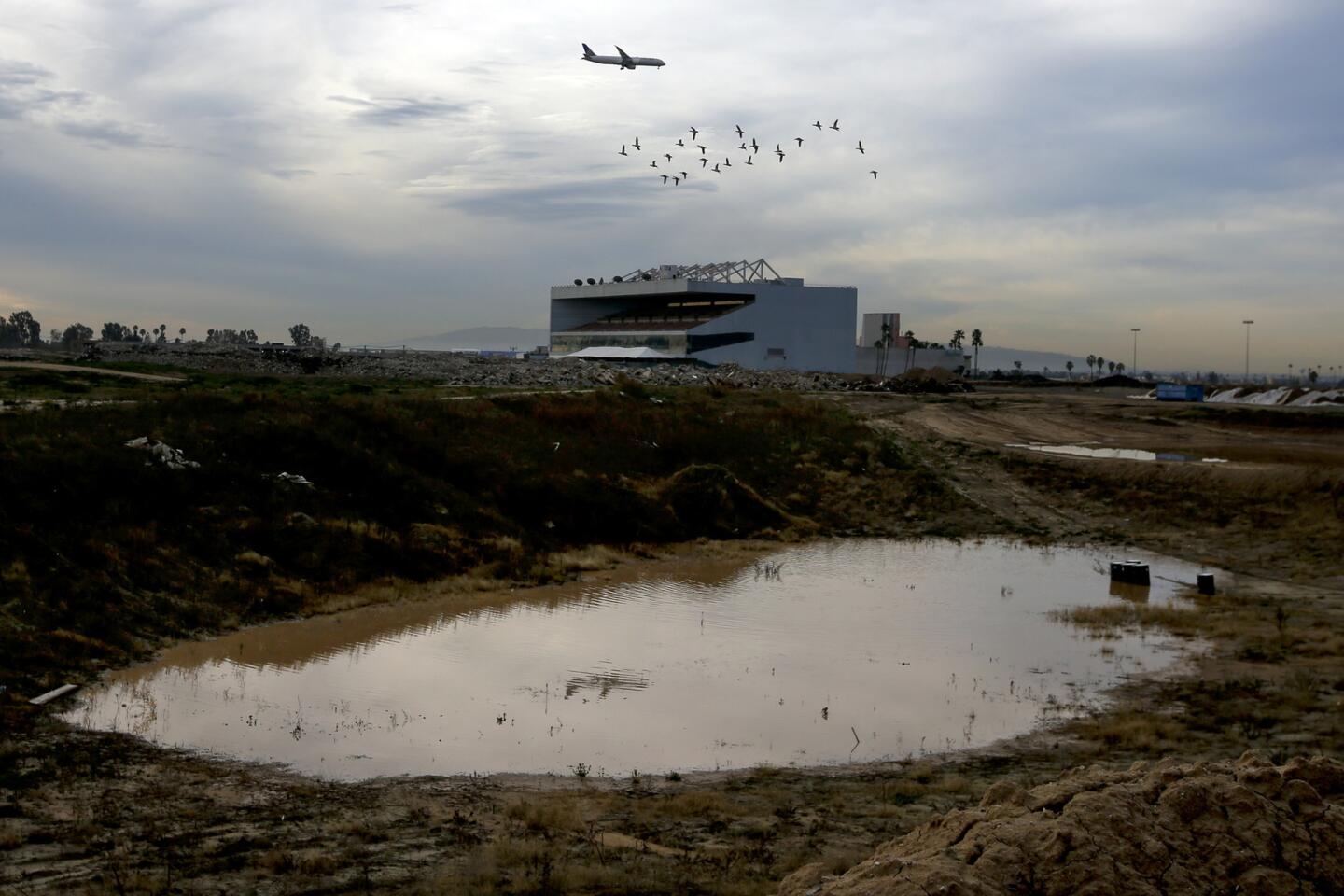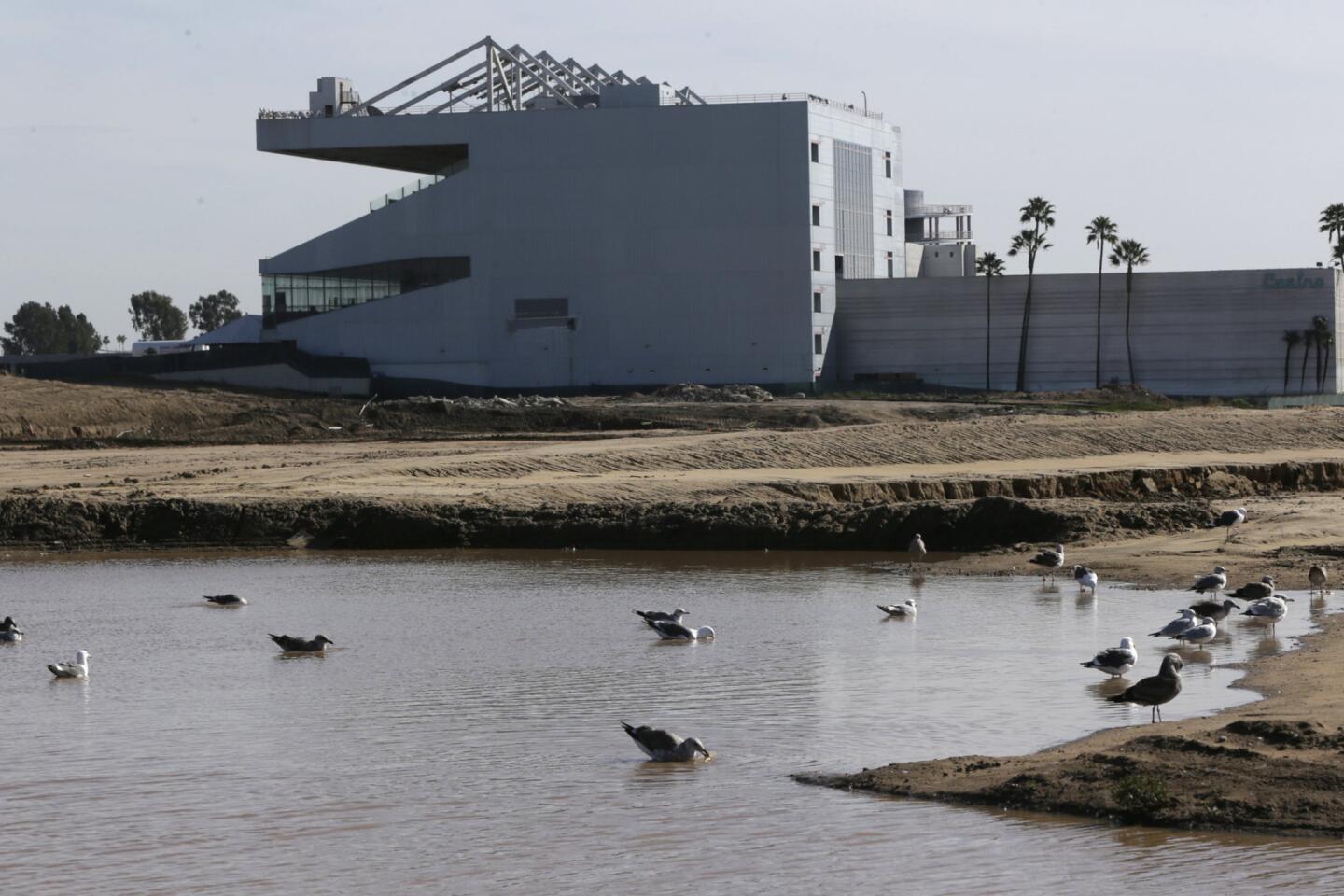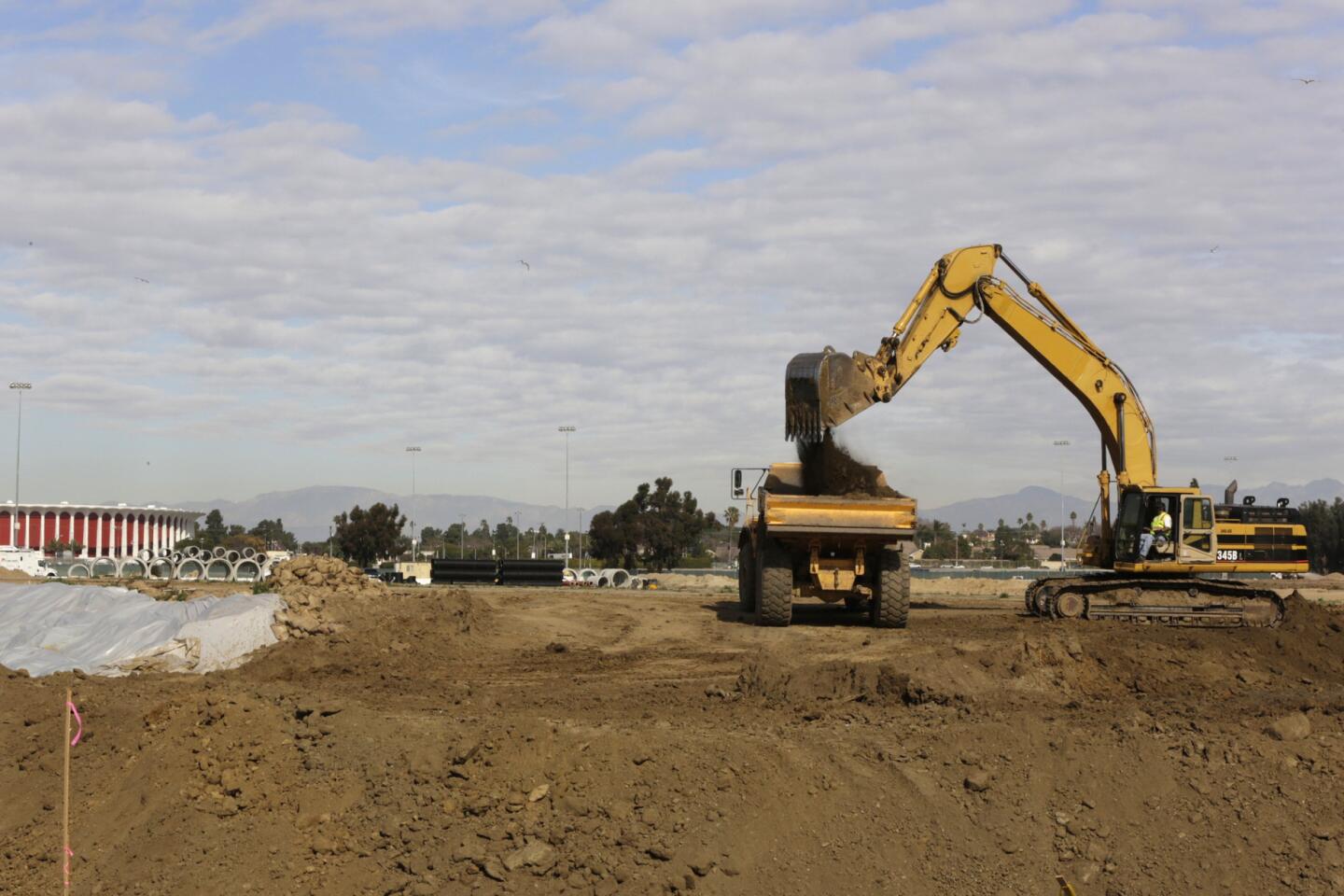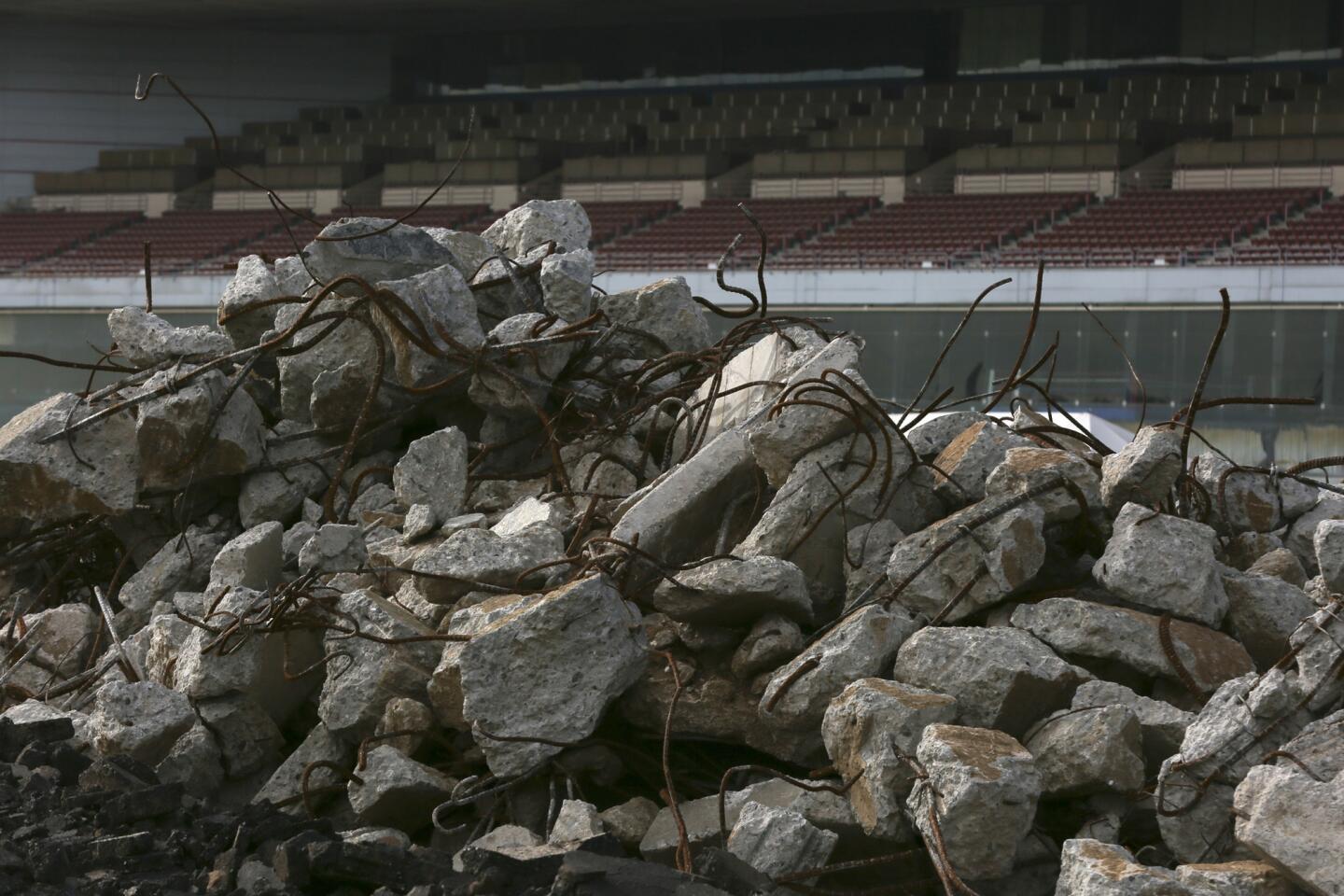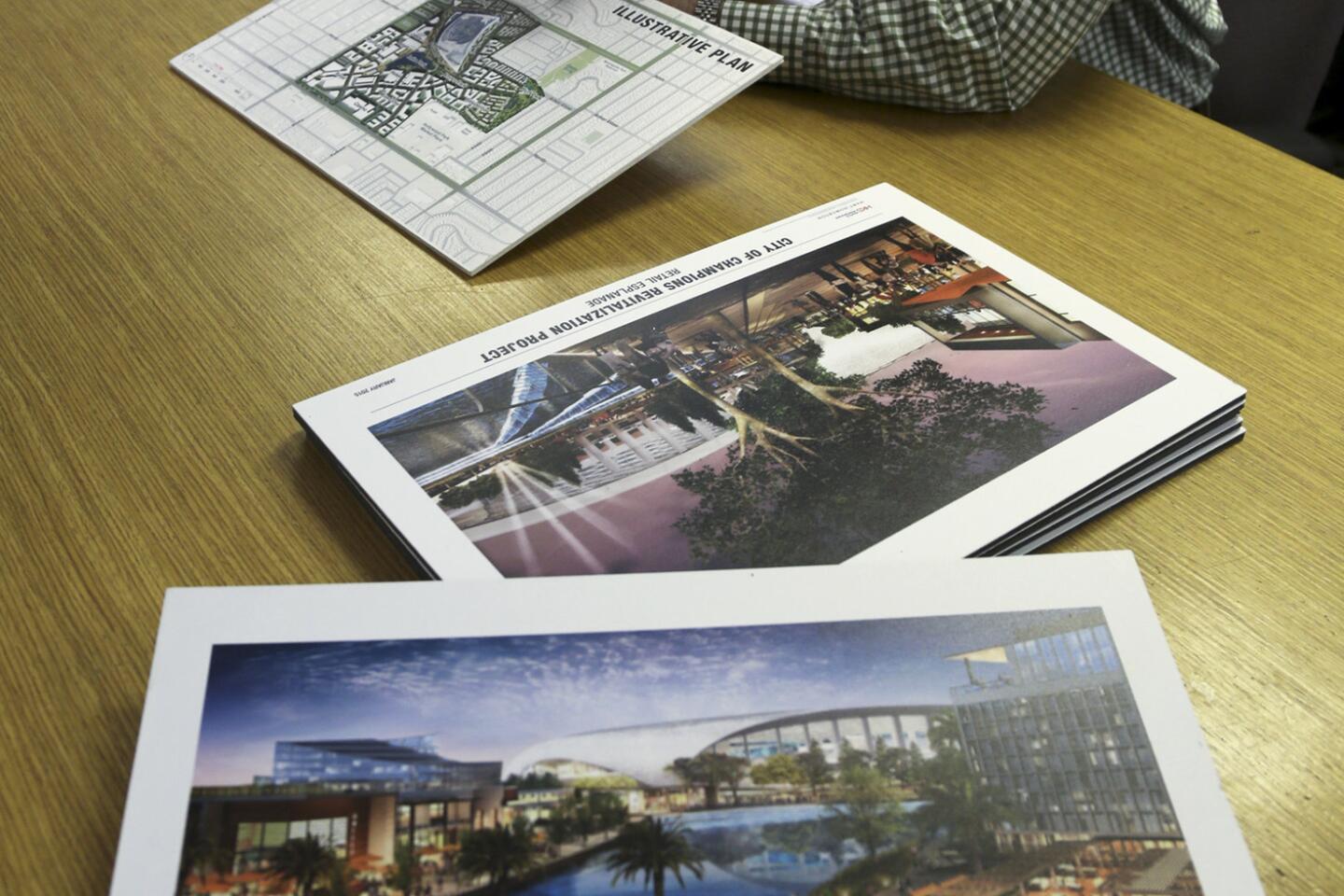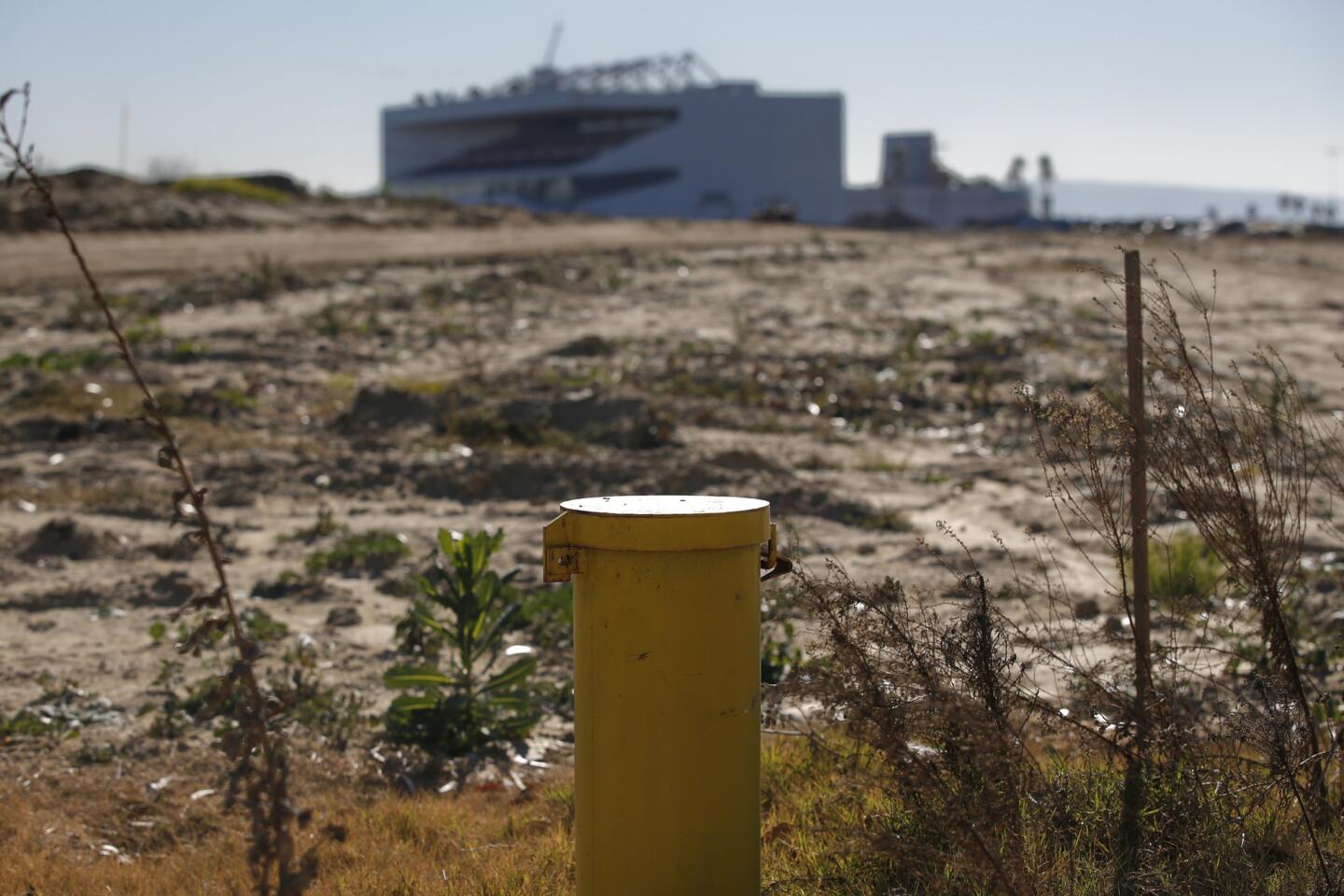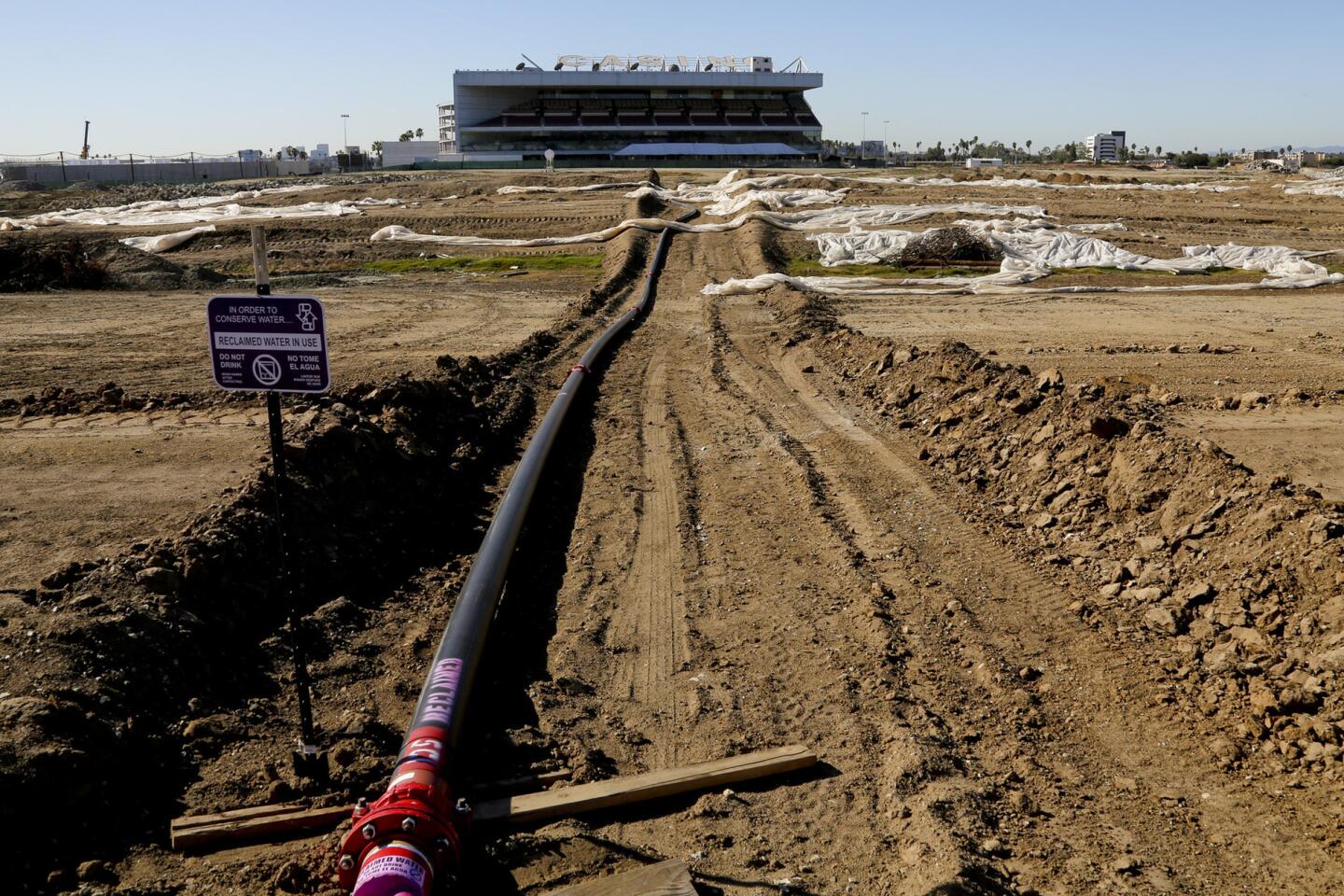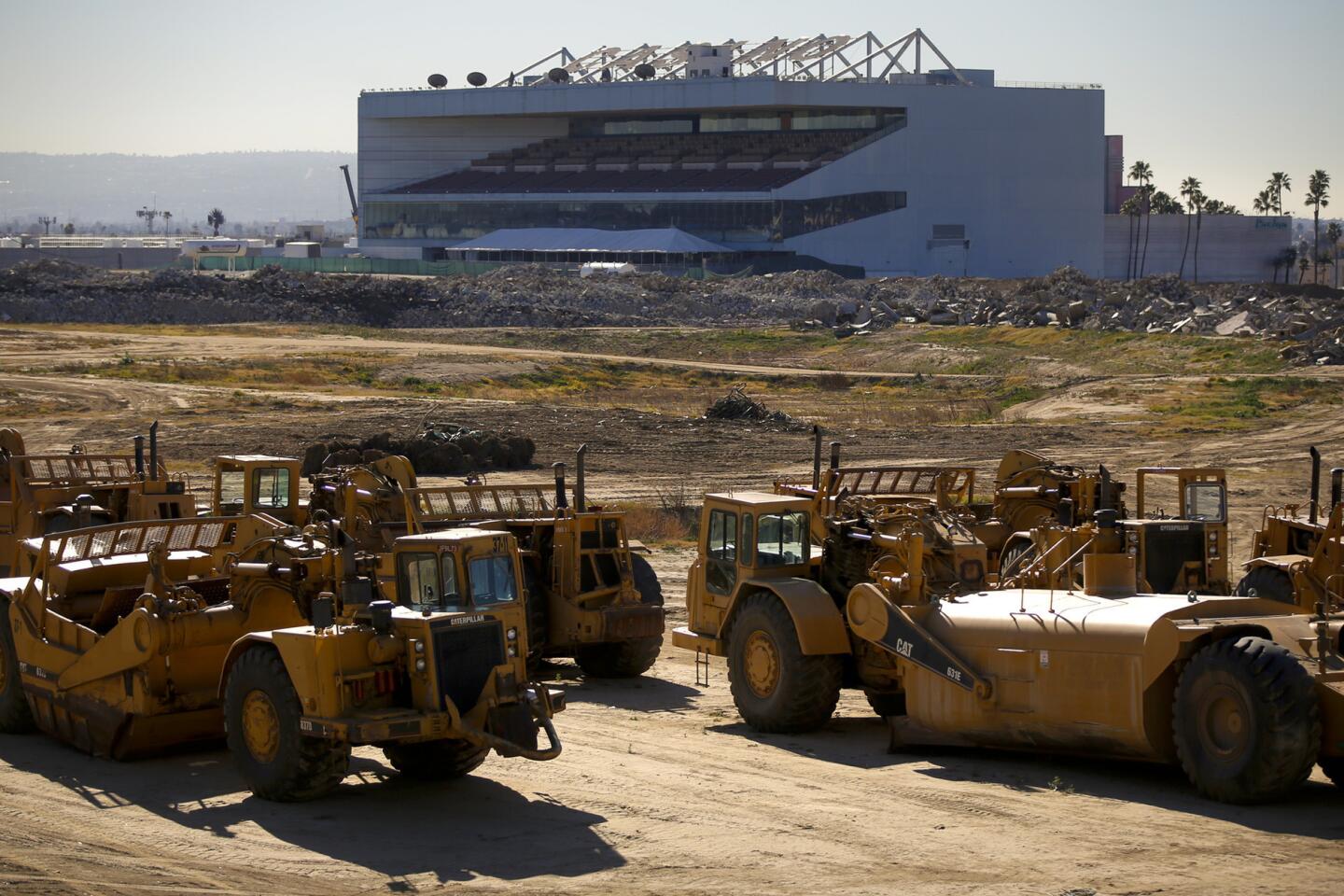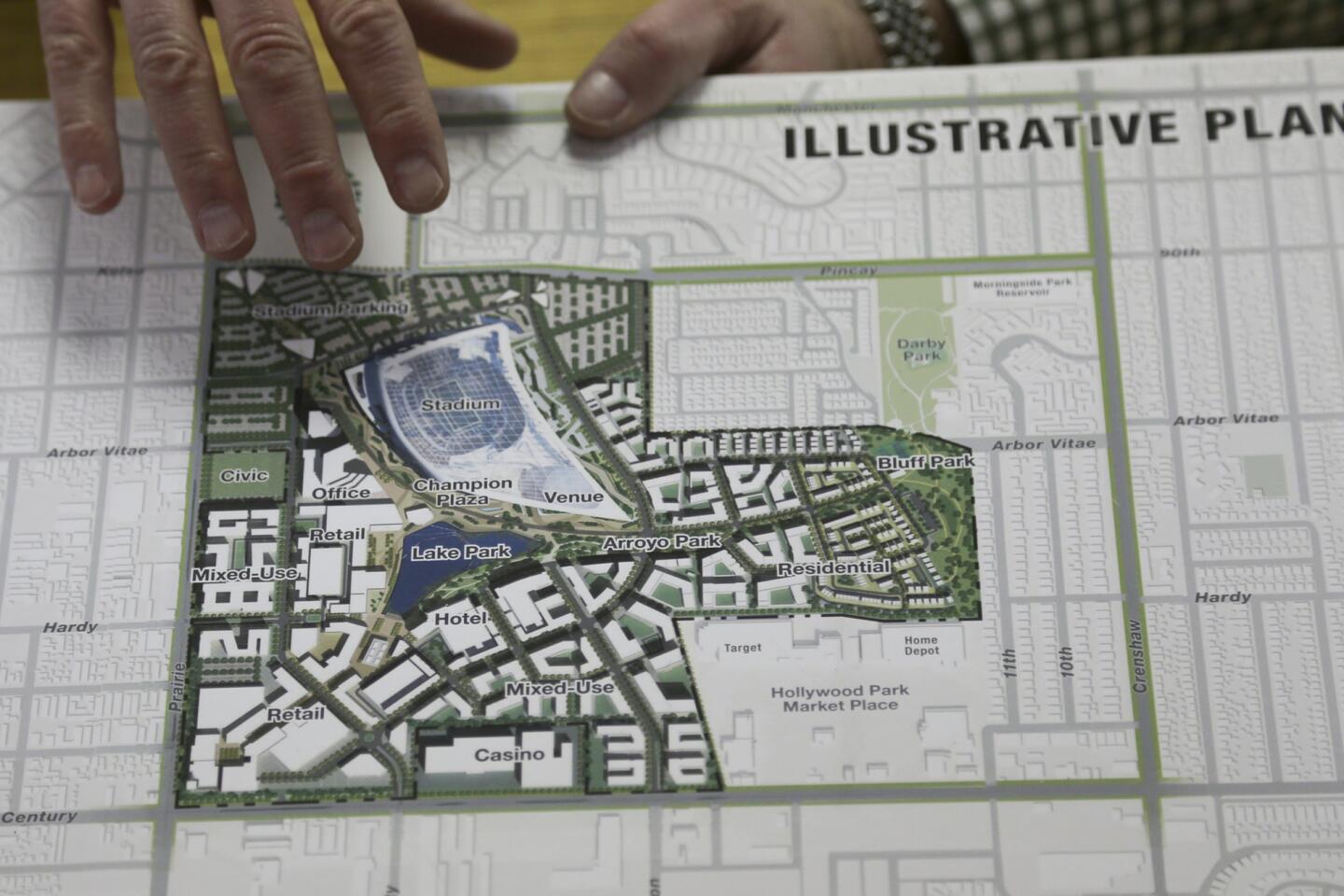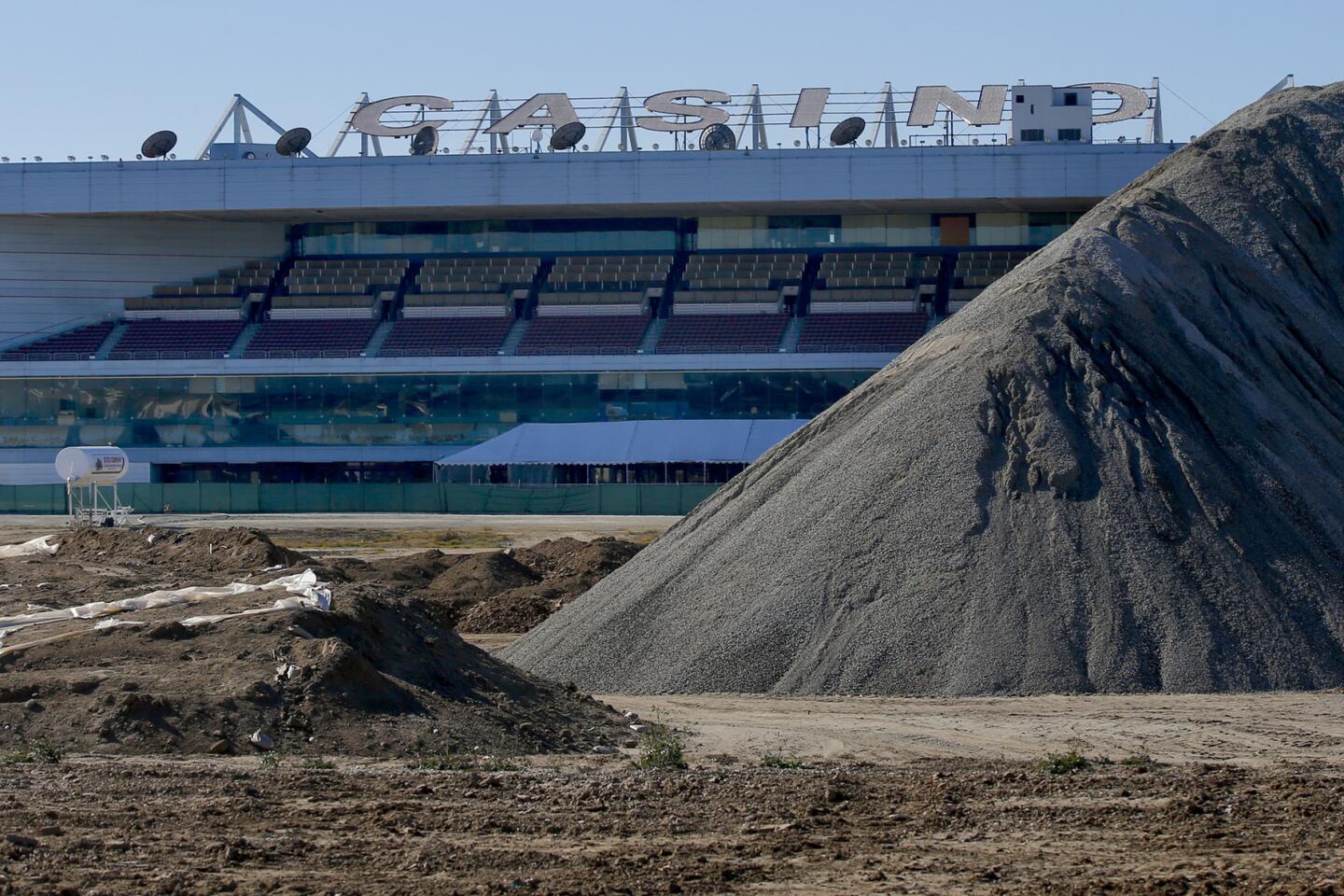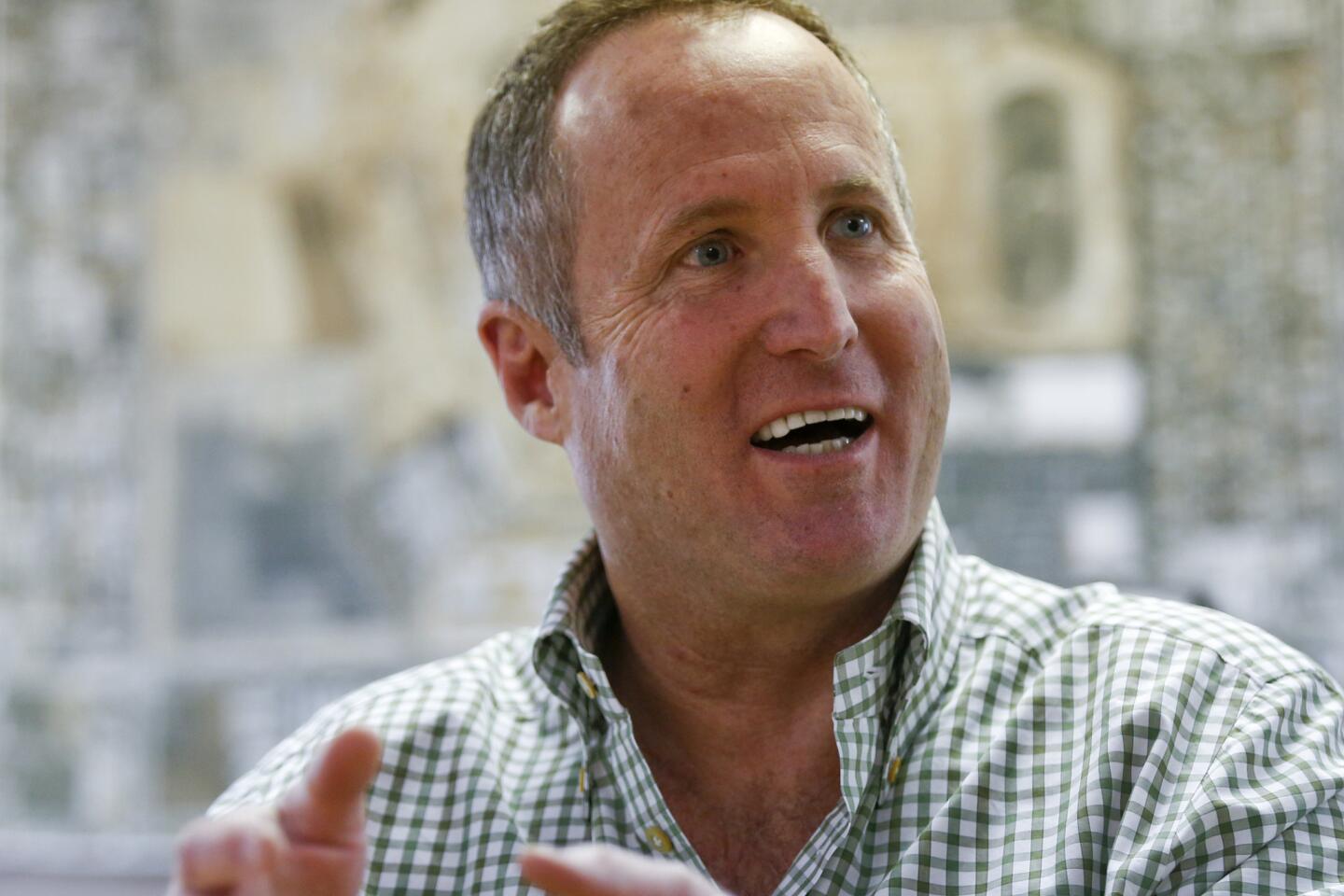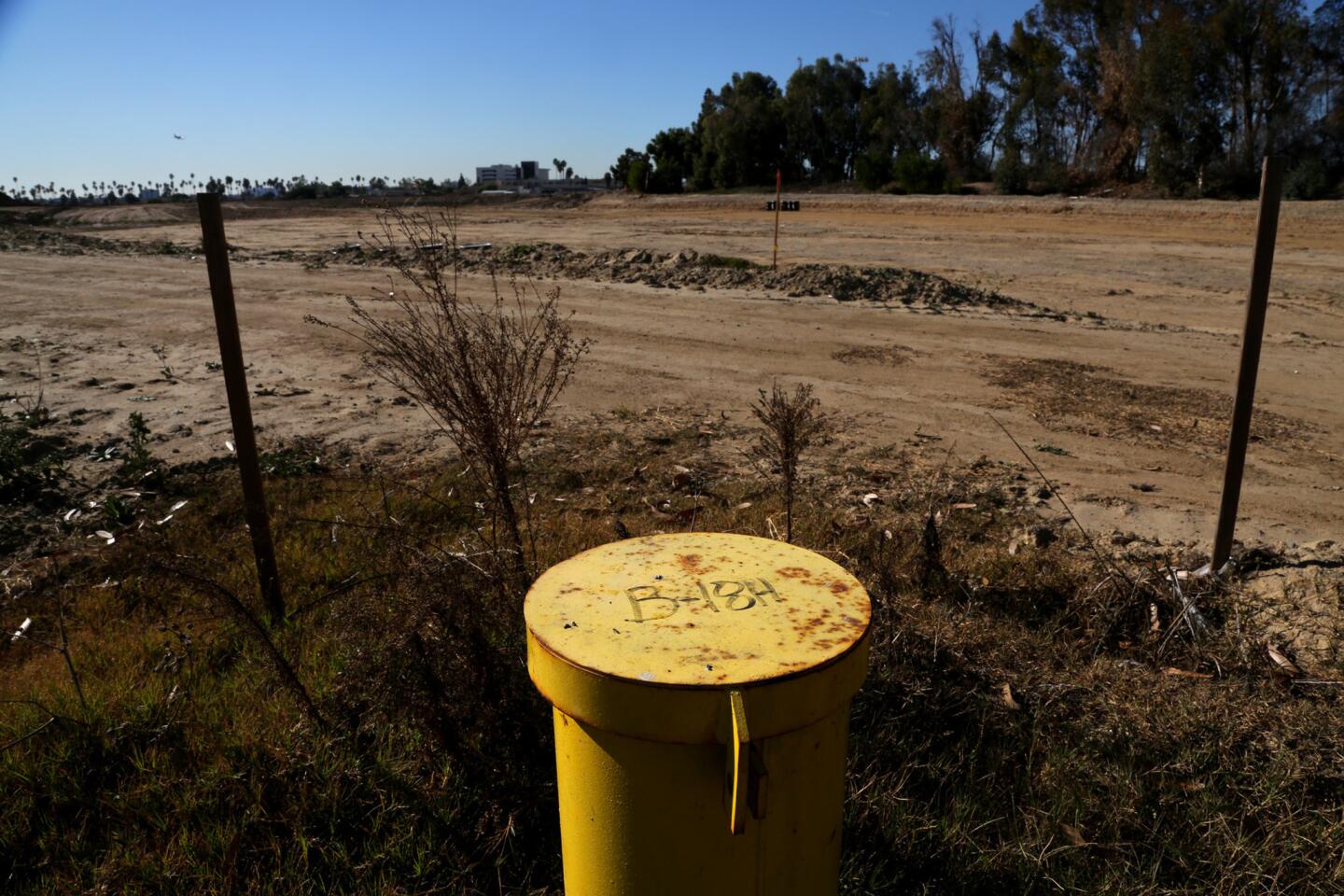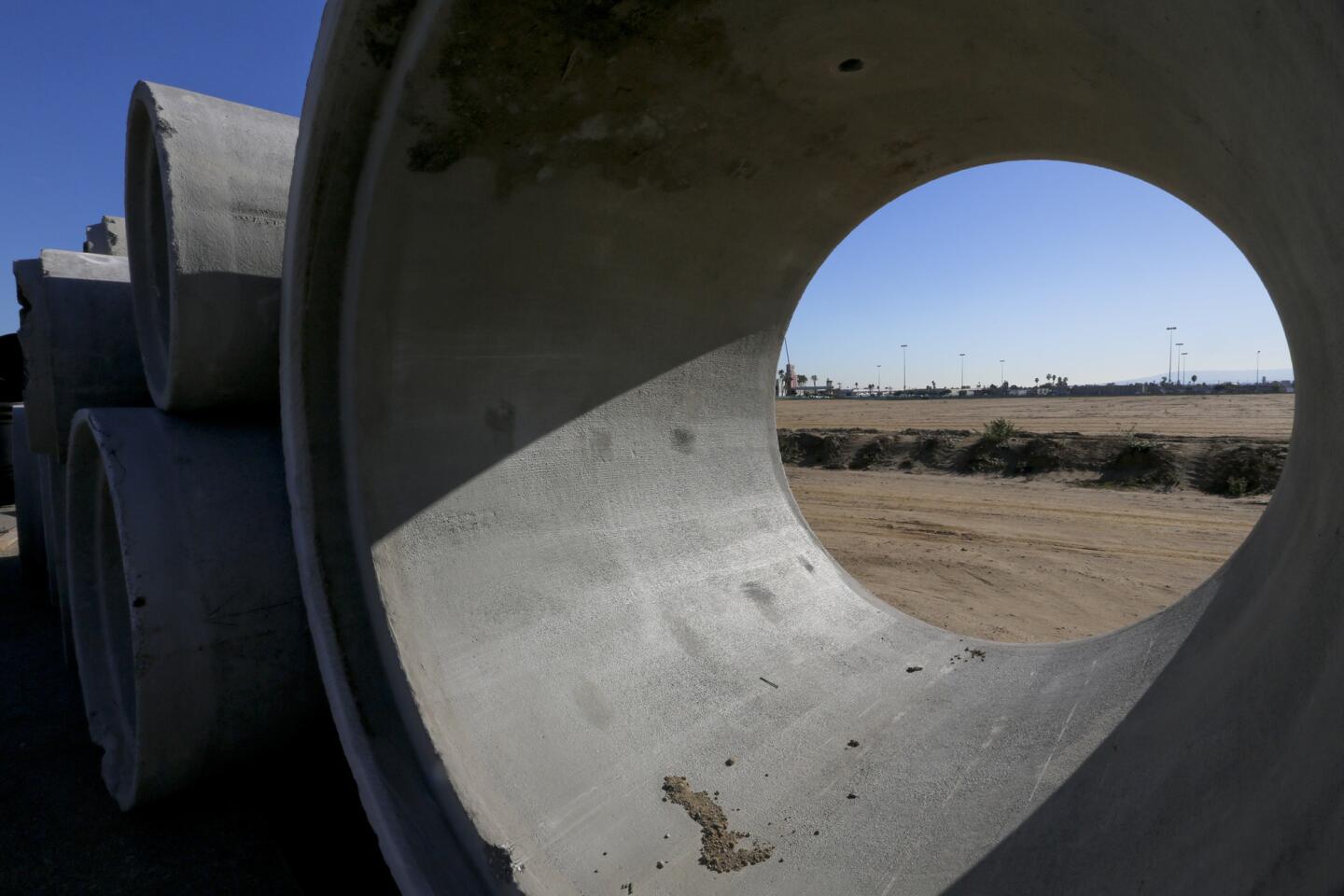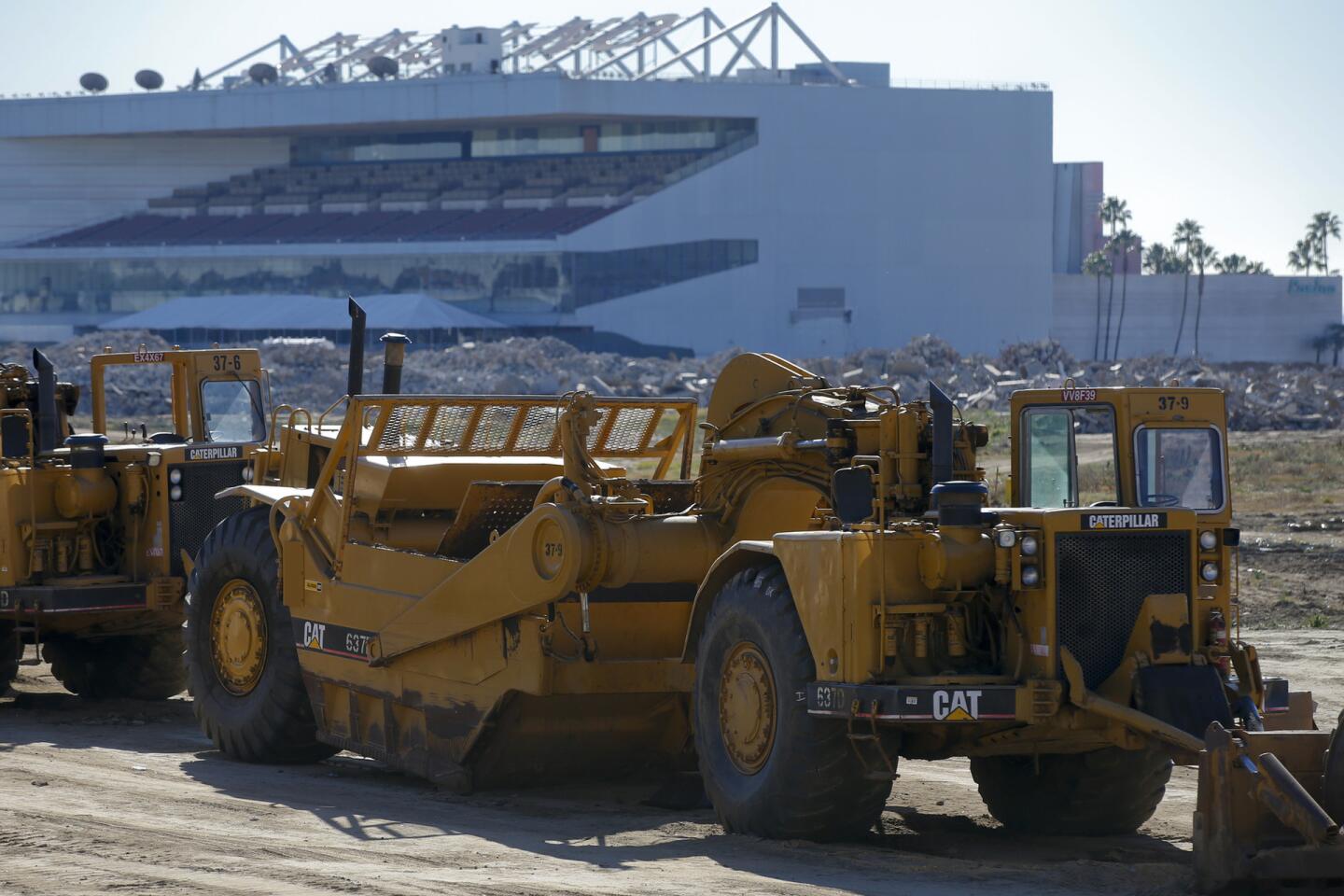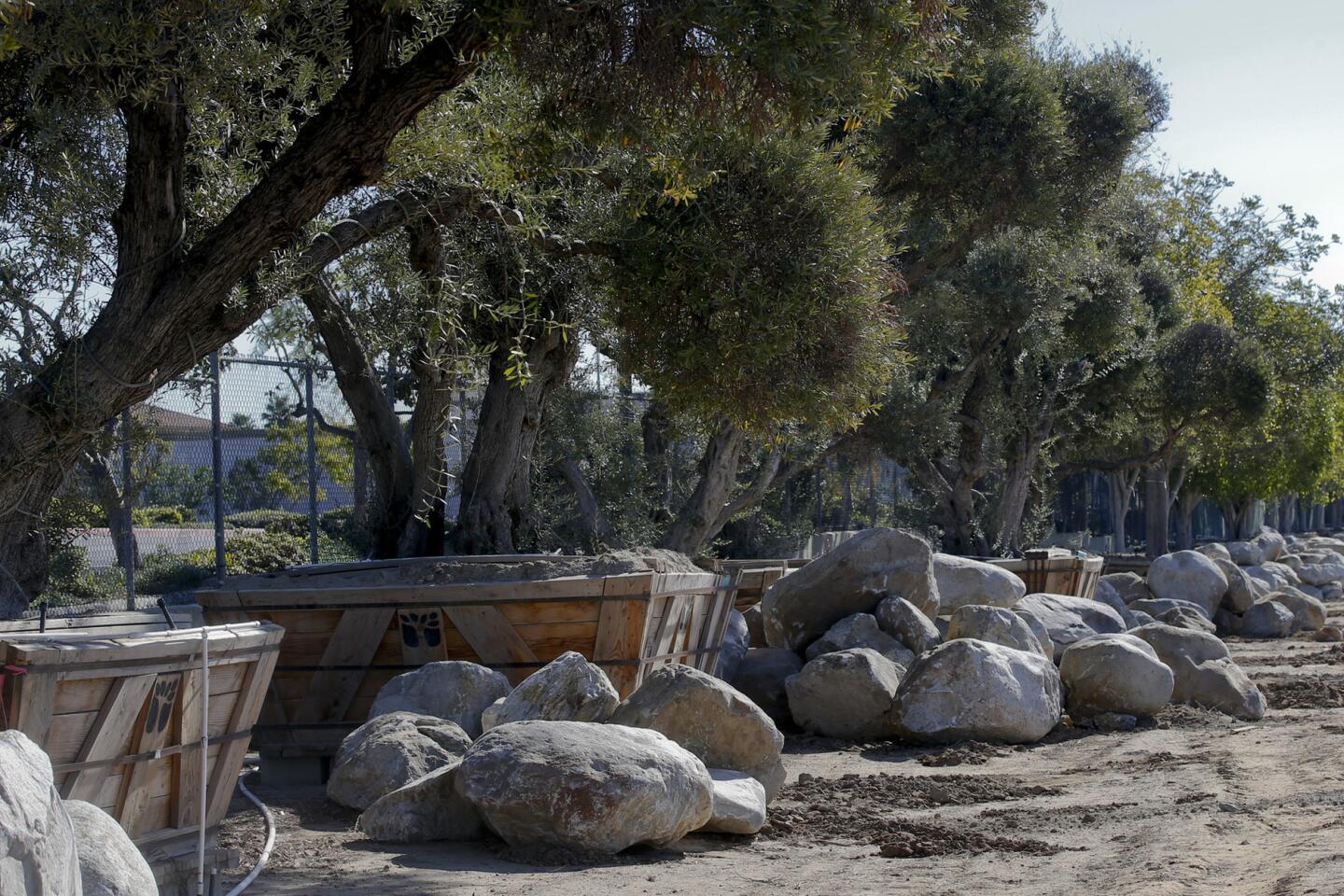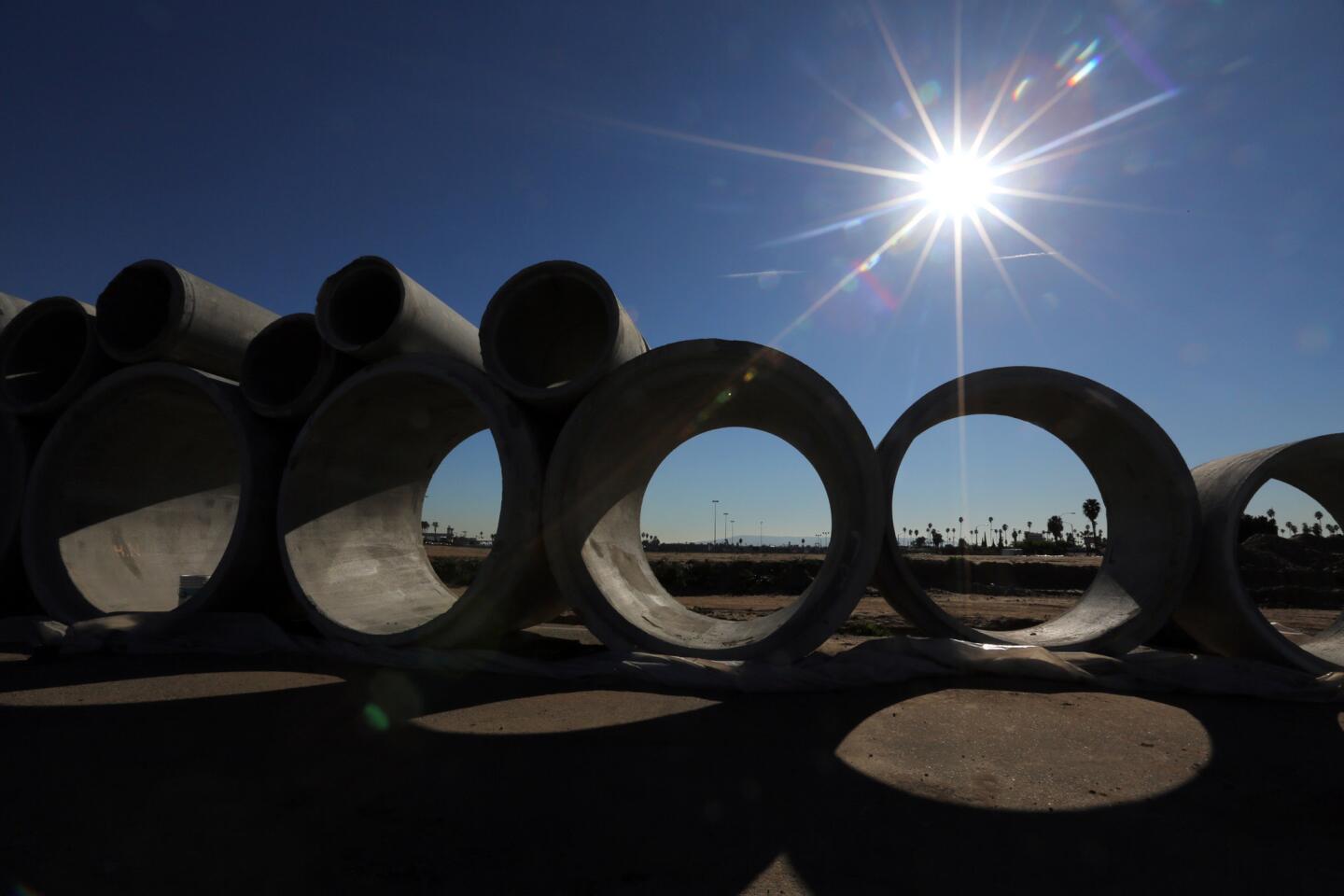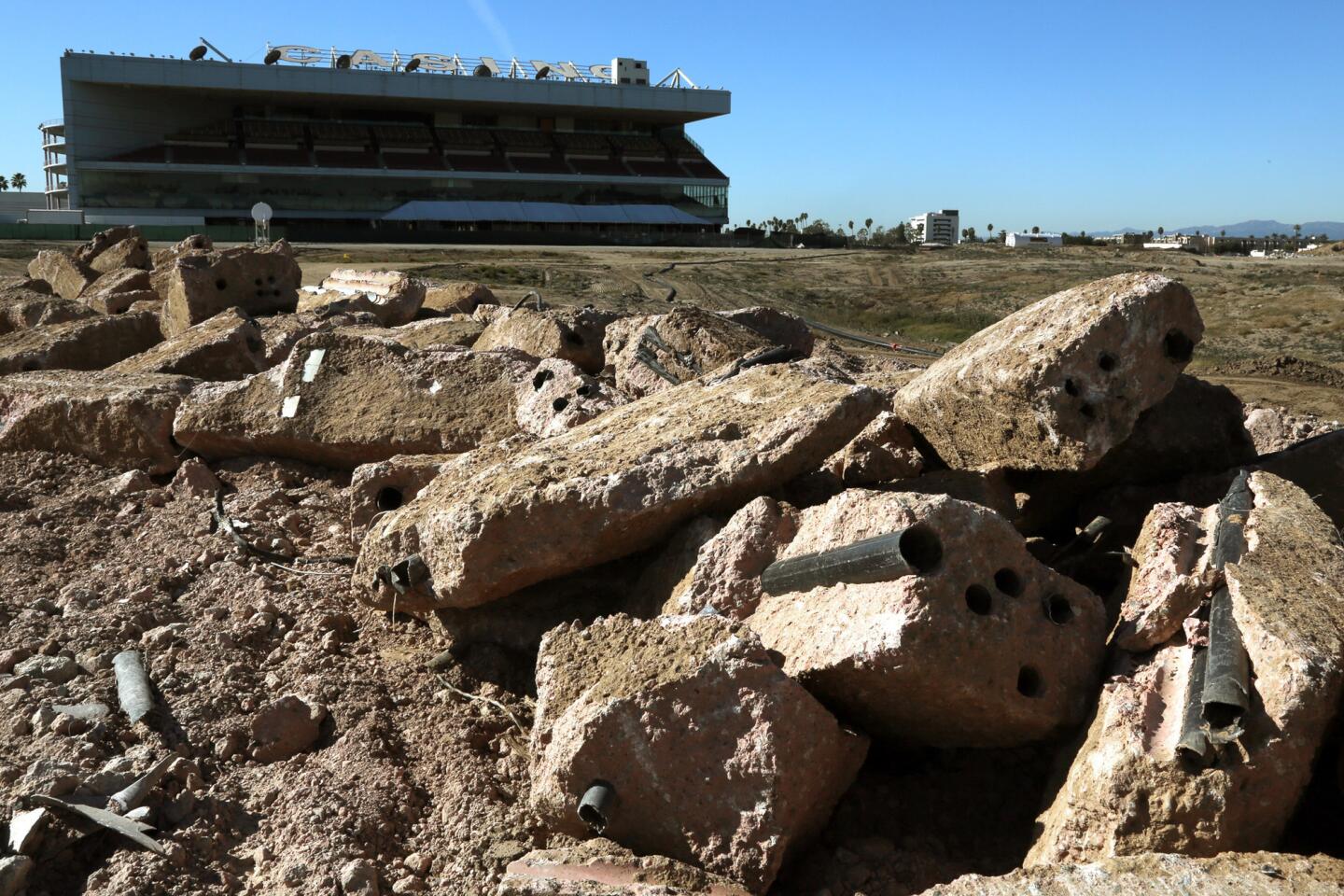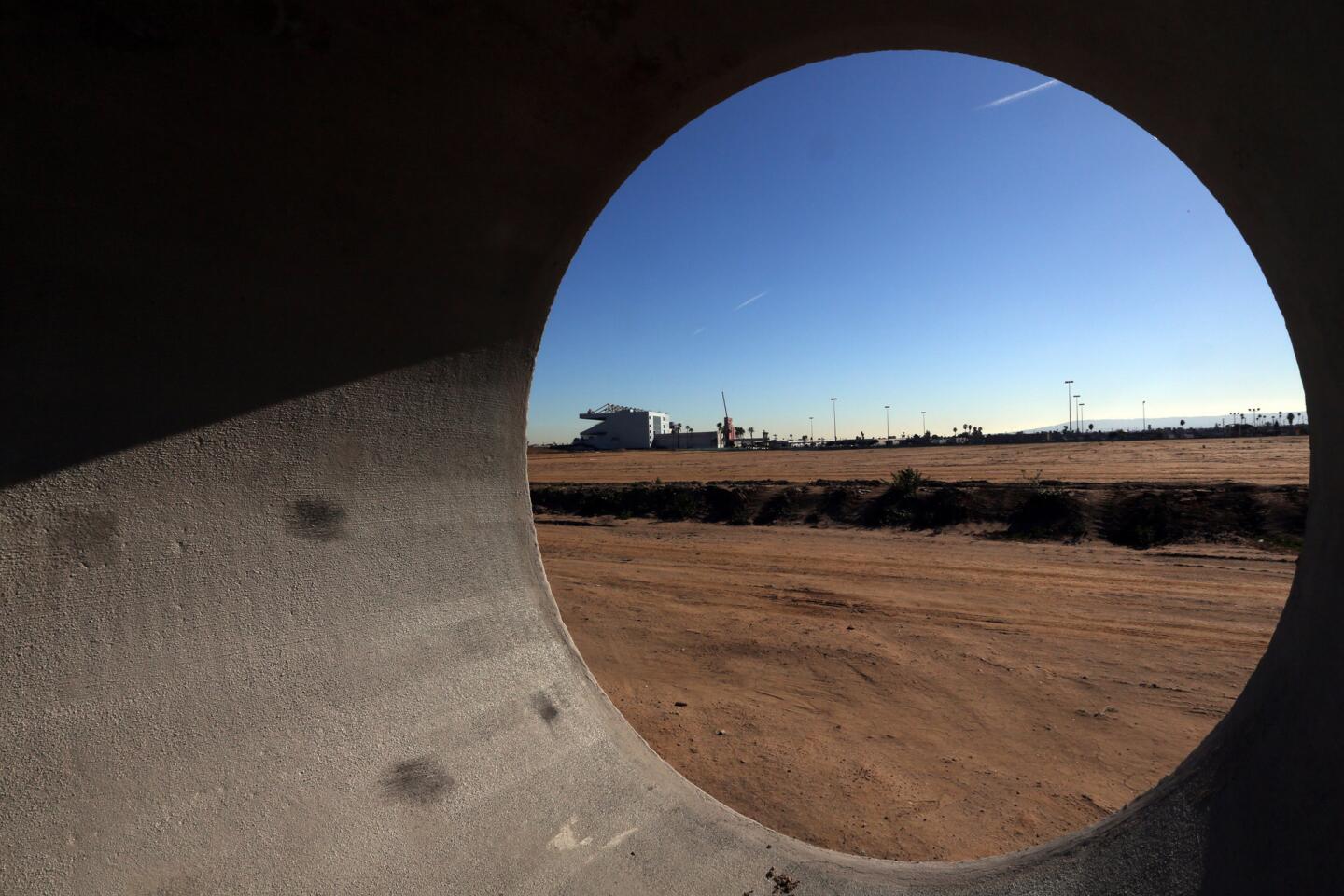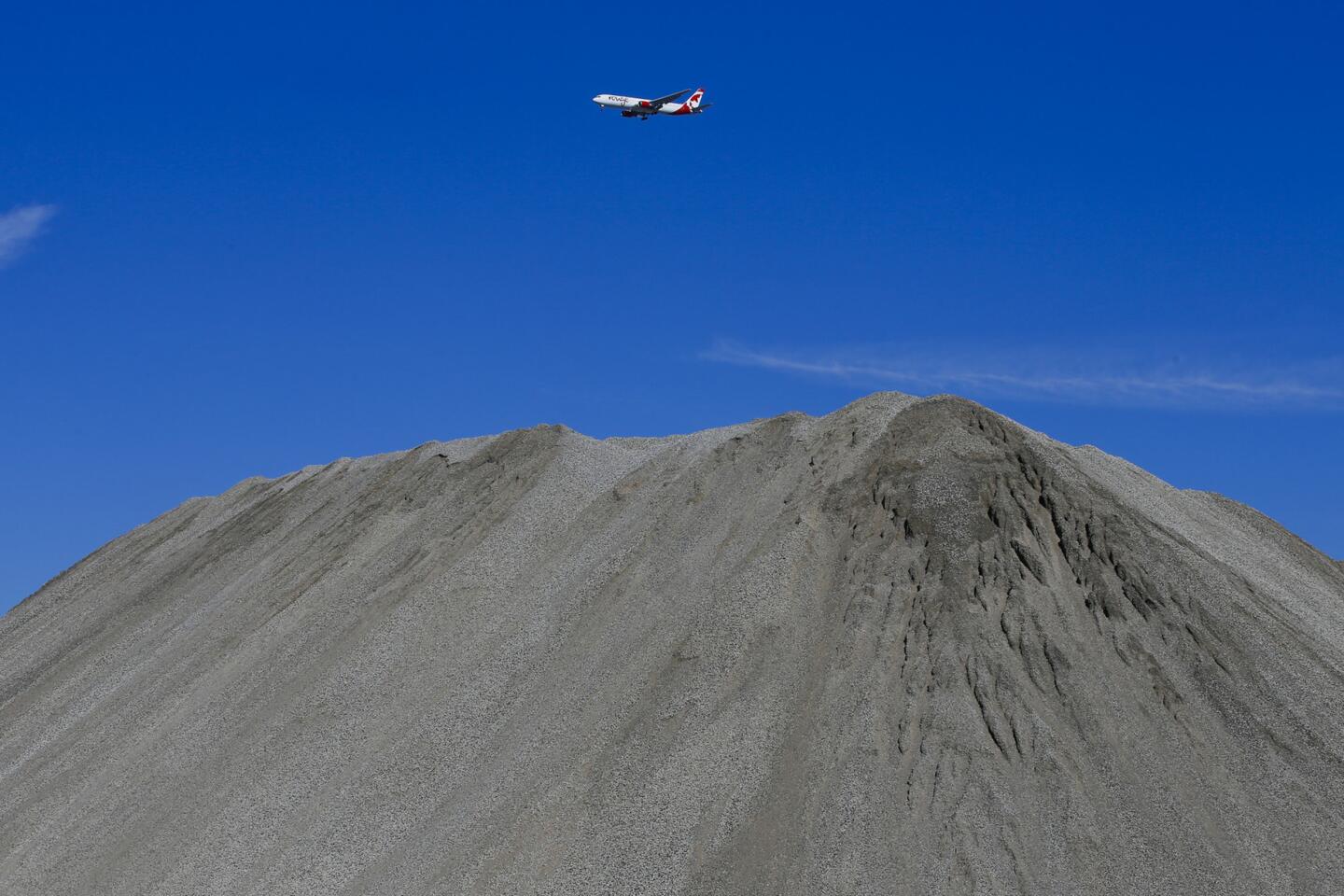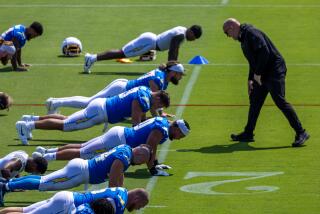NFL will return to Los Angeles for 2016 season
REPORTING FROM HOUSTON — For more than two decades, billionaire developers, corporate titans, Hollywood power-brokers and four Los Angeles mayors tried and failed to bring the National Football League back to the nation’s second-largest market.
The odyssey ended Tuesday.
NFL owners voted 30-2 to allow the St. Louis Rams to move to Los Angeles for the 2016 season and to give the San Diego Chargers a one-year option to join the Rams in Inglewood.
See the most-popular stories in Sports this hour>>
The Rams’ home will ultimately be on the site of the old Hollywood Park racetrack in Inglewood in what will be the league’s biggest stadium by square feet, a low-slung, glass-roofed football palace with a projected opening in 2019 and a price tag that could approach $3 billion.
“We realized this was our opportunity,” NFL Commissioner Roger Goodell said.
Goodell, while pointing out the Rams are returning to their former home market, also predicted the Inglewood stadium would change “not just NFL stadiums and NFL complexes but sports complexes around the world.”
The historic vote in a fourth-floor conference room at a suburban hotel left open the possibility of the Chargers or Oakland Raiders sharing the Inglewood stadium.
The league will also give the Chargers and the Raiders each $100 million to put toward new stadiums if they stay in their current home markets. No public money will be used to build the Inglewood stadium.
If the Chargers do not exercise their right to move to Inglewood by Jan. 15, 2017, the Raiders will have a one-year option to join the Rams.
Rams owner Stan Kroenke called the decision to leave St. Louis “bittersweet.”
So you’re new to L.A. and need a temporary NFL venue? Try the Coliseum first
“We understand the emotions involved with our fans,” he said in his first public comments in more than a year. “It’s not easy to do these things. It’s purposefully made hard.
L.A. is “a difficult place to permit a stadium and build something that we as a league can all be proud of. I think we worked hard and we got a little bit lucky and we had a lot of good people help us,” said Kroenke.
Eric Dickerson, a Hall of Fame running back for the Rams when they played in Anaheim before leaving for St. Louis after the 1994 season, followed the final vote as it took place.
“I can’t put it into words, man,” Dickerson said of his reaction. “When I see them kick off, the first time they play, that’s when I’ll believe it’s really happened.”
NFL already has Los Angeles Rams listed on its website
Chargers owner Dean Spanos and Raiders owner Mark Davis joined Kroenke on stage during Goodell’s news conference. All were subdued and looked fatigued after meetings that started at 9 a.m. and broke around 8 p.m.
“This is not a win for the Raiders today, but at the same time I’m really happy for Stan Kroenke,” Davis said. “We’ll be working really hard to find us a home. … Don’t feel bad. We’ll get it right.”
Spanos was equally noncommittal about returning to his home market for good.
“You know, I’m going to try to take a day off,” he said. “This has really been excruciating for everyone. I’m going to look at all our options. … It’s very difficult to say right now I’m going to do this or I’m going to do that.”
The two owners stepped off stage and left the room before the news conference ended.
Earlier Tuesday, the Committee on L.A. Opportunities, composed of six NFL owners, endorsed the Carson site backed by the Chargers and Raiders. The recommendation didn’t sway other owners.

NFL owners voted to allow the St. Louis Rams to move to Los Angeles and give the San Diego Chargers the option to join. The Oakland Raiders will not be moving to Los Angeles.
A solution became imminent when owners were presented with the option of the Rams and a team to be determined at Inglewood. That received 20 votes in the first balloting, four shy of the 24 needed to pass, and 21 on the second vote. The outcome appeared inevitable to owners, prompting Goodell to pull aside Davis and Spanos and begin negotiating an exit.
Before the final vote, Davis agreed to stay in Oakland for now and Spanos’ options dwindled. It left a clear choice for the owners. In the end, a tight race between the projects that had stretched almost a year became a landslide.
“They made the right decision,” Dallas Cowboys owner Jerry Jones said. “It’s such a natural to have the Los Angeles Rams back in Los Angeles.”
Developers envision transforming the 298-acre Inglewood site into a multibillion-dollar entertainment, retail and housing complex, with the privately financed stadium and a performing arts venue as the centerpiece.
Chris Meany, development manager for the Hollywood Park Land Co., said he isn’t sure when stadium construction will begin, but “I’m expecting tomorrow to be told not to sleep for a while.”
The stadium will have identical locker rooms, offices and owner’s suites for two teams. There will be 70,240 seats and the capacity can be expanded to add 30,000 people in standing-room-only areas for large events.
The venue, set 100 feet into the ground and with a 175-foot above-ground profile, and developers hope to host such indoor events as college basketball’s Final Four, the NFL Pro Bowl and scouting combine in addition to conventions and award shows.
The design calls for a roof with metal borders and an area over the playing field made of a transparent material called ETFE, which is as clear as a car windshield and believed to be strong enough to support the weight of a vehicle.
The stadium would be open on the sides, allowing breezes to flow through and enhance the outdoor feel.
“It’s going to be so much more than going to a football game,” said Mark Williams of HKS Inc., the firm designing the stadium. “You’re going to be absorbed into the site, absorbed into the stadium and get a very wide bandwidth of experience. It’s the kind of memory people are going to cherish for a lifetime.”
Until the stadium is complete, the Rams are expected to play at the L.A. Memorial Coliseum. If the Chargers decide to relocate, it’s unclear where they will play.
Left on the outside looking in is Carson and the $1.7-billion stadium the Chargers and Raiders planned to build on 157 acres atop an old landfill.
The city, which owns the property, said Tuesday that it planned to pursue a commercial development on the site.
St. Louis was disappointed, too. The region proposed a $1.1.-billion riverfront stadium to keep the Rams that included about $400 million in public funding. The NFL and the Rams called the plan unworkable, one that the team said no other franchise would accept.
The “decision by the NFL concludes a flawed process that ends with the unthinkable result of St. Louis los-
ing the Rams,” said Jim Woodcock, spokesman for the St. Louis stadium task force.
In a statement, Oakland Mayor Libby Schaaf said the city understands the Raiders’ frustration about their stadium situation and is “excited to have this chance to rededicate ourselves to getting a deal done.”
The tone differed in San Diego, where the Chargers, the city and county have engaged in heated rhetoric since the franchise walked away from stadium negotiations in June.
“If Mr. Spanos has a sincere interest in reaching a fair agreement in San Diego, we remain committed to negotiating in good faith,” said a joint statement from San Diego Mayor Kevin L. Faulconer and County Supervisor Chairman Ron Roberts. “We are not interested in a charade by the Chargers if they continue to pursue Los Angeles.”
L.A. Mayor Eric Garcetti called the NFL’s decision “confirmation that this is a town that nobody can afford to pass up.
“It also confirms our strategy over the past 20 years, as painful as it was, that you can bring a sports team without having to spend taxpayer money on it.”
Over the years, dreamers fervently believed they had the answer to bring back the NFL. They wanted to build a Spanish-style stadium dubbed the “Hacienda” in Carson, turn the Rose Bowl into a craftsman-style venue or construct a hilltop NFL neighbor to Dodger Stadium.
There were multiple plans for stadiums in downtown L.A. — the Anschutz Entertainment Group abandoned its proposal in March — as well as fleeting visions in Anaheim, Industry, Irvine and several attempts to remake the Coliseum while preserving its historic character.
Things changed in January 2014, when Kroenke bought 60 acres of land for an estimated $101 million next to 238 acres of the Hollywood Park site owned by San Francisco-based developer Stockbridge Capital. At the time, the NFL downplayed the development in public but behind the scenes the league was pushing to return a team to L.A.
“This is the hardest undertaking I’ve faced in my professional career,” said Kroenke, a billionaire real estate magnate and sports mogul who owns a compound in Malibu.
Later in 2014, Kroenke and Stockbridge Capital agreed to combine their properties and work together. The developers estimate between 125 and 150 architects have been working full-time since mid-2014 on the stadium project.
The Carson backers, meanwhile, proposed a “silver bullet solution” that would provide a new home for the Chargers and Raiders, who play in the NFL’s two oldest stadiums, thereby solving what they termed the league’s California dilemma.
They envisioned a “mega-market” stretching from Santa Barbara to Mexico.
That project officially ended Tuesday, as did L.A.’s long wait for an NFL team.
FROM THE ARCHIVES: Remembering when the Rams left
Ram fans kept the faith while team lost it
She’s St. Louis’ misery, and it can have her
Follow Sam Farmer on Twitter @LATimesFarmer
Follow Nathan Fenno on Twitter @nathanfenno
Times staff writer David Zahniser contributed to this report.
More to Read
Go beyond the scoreboard
Get the latest on L.A.'s teams in the daily Sports Report newsletter.
You may occasionally receive promotional content from the Los Angeles Times.
